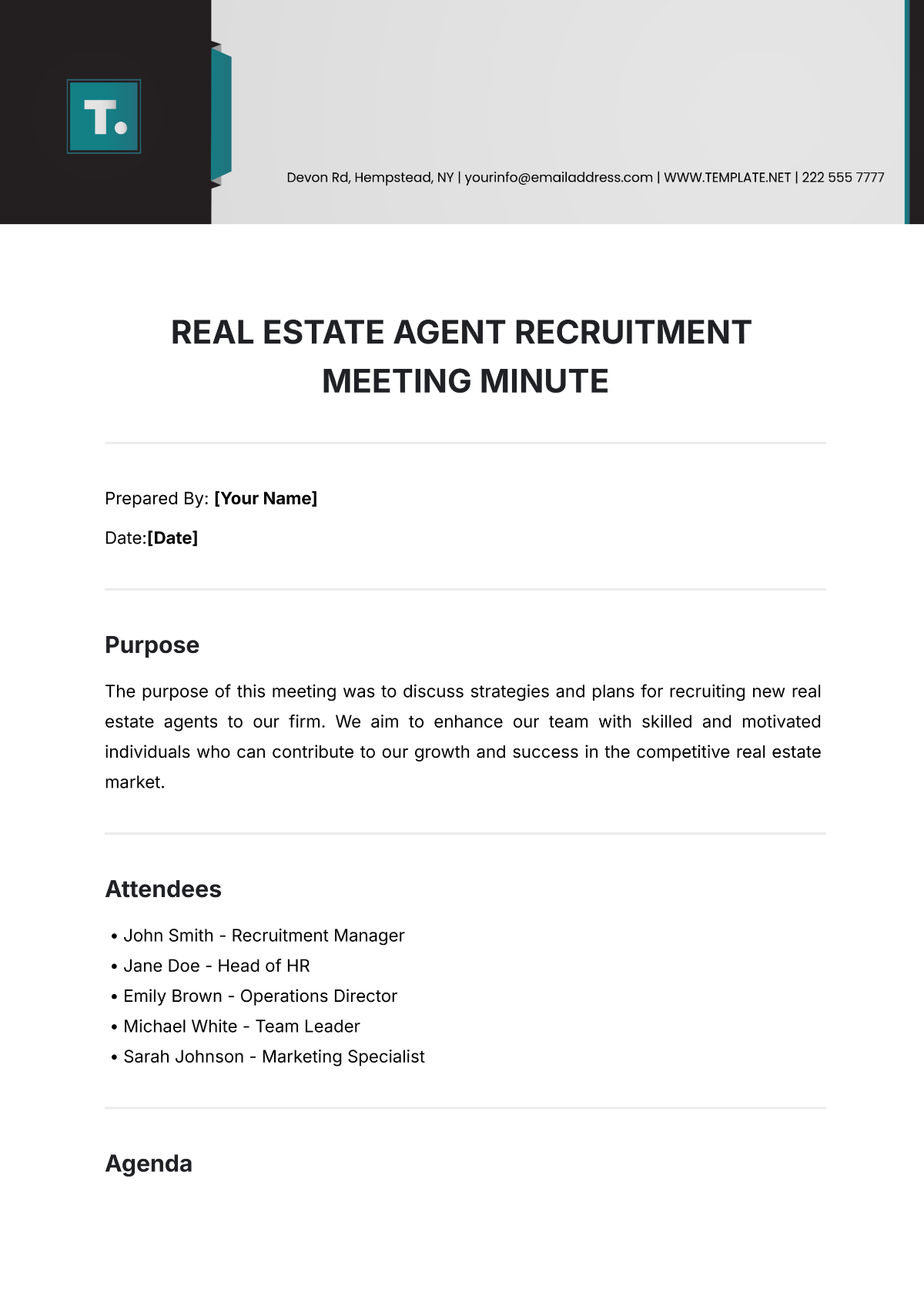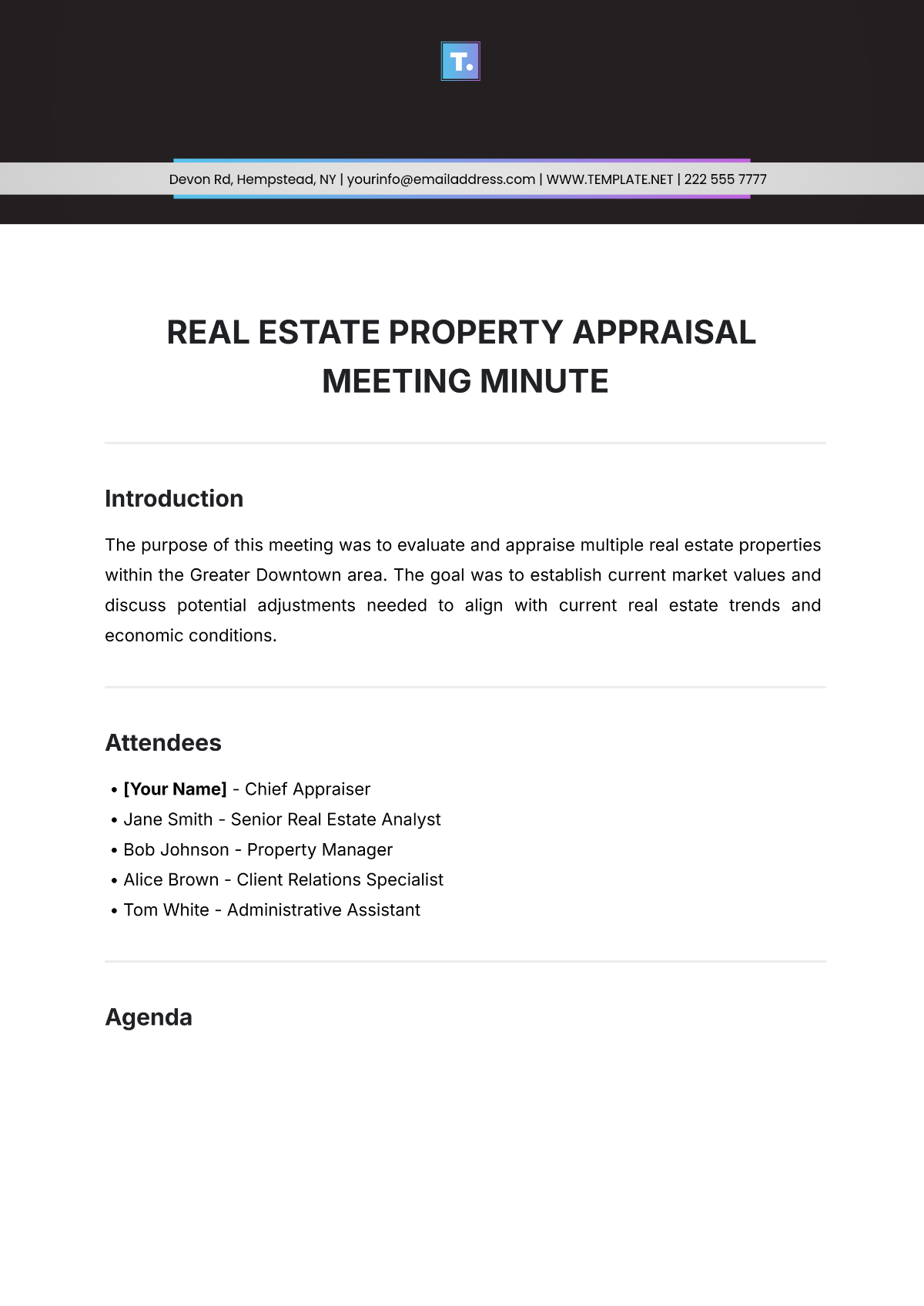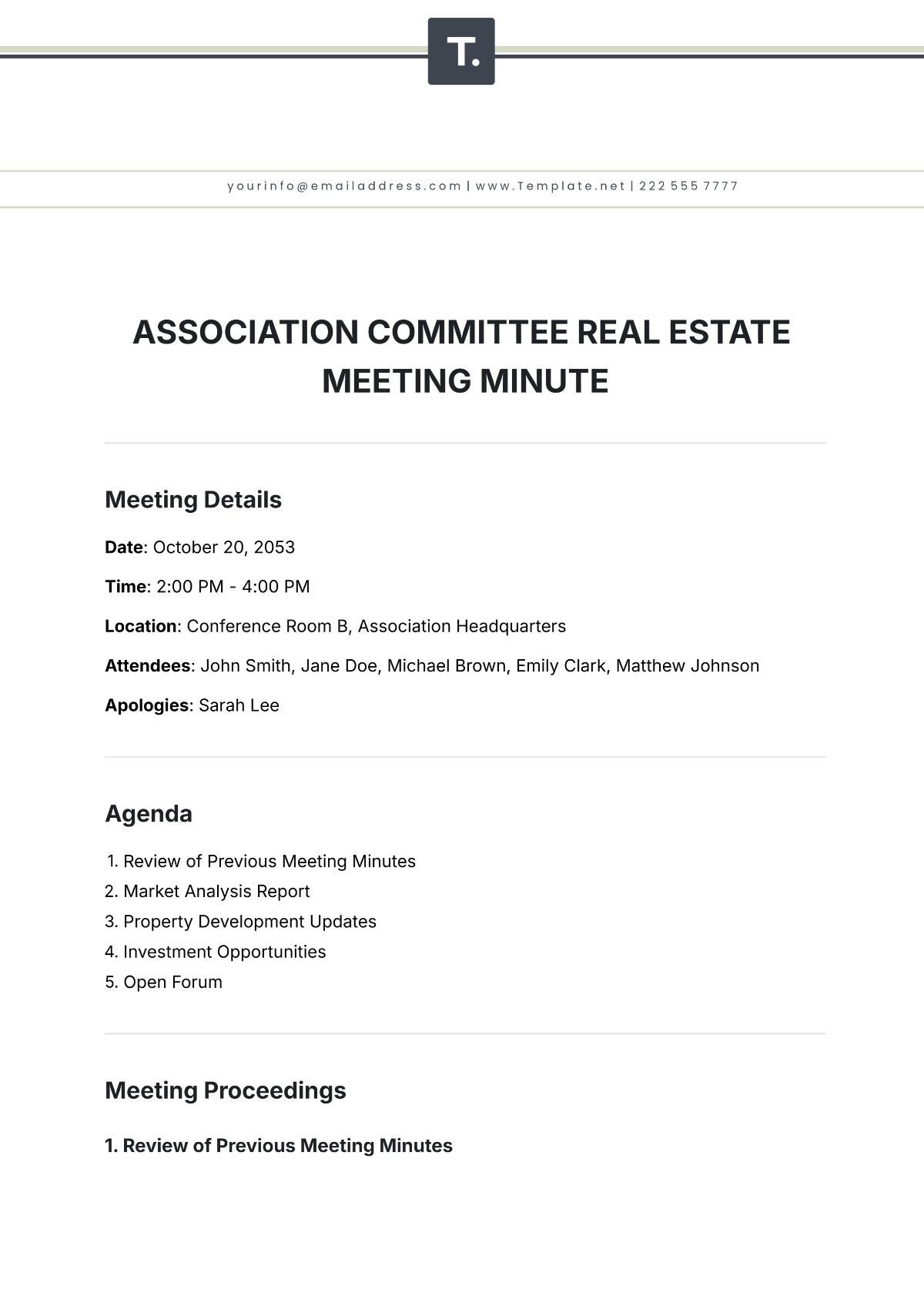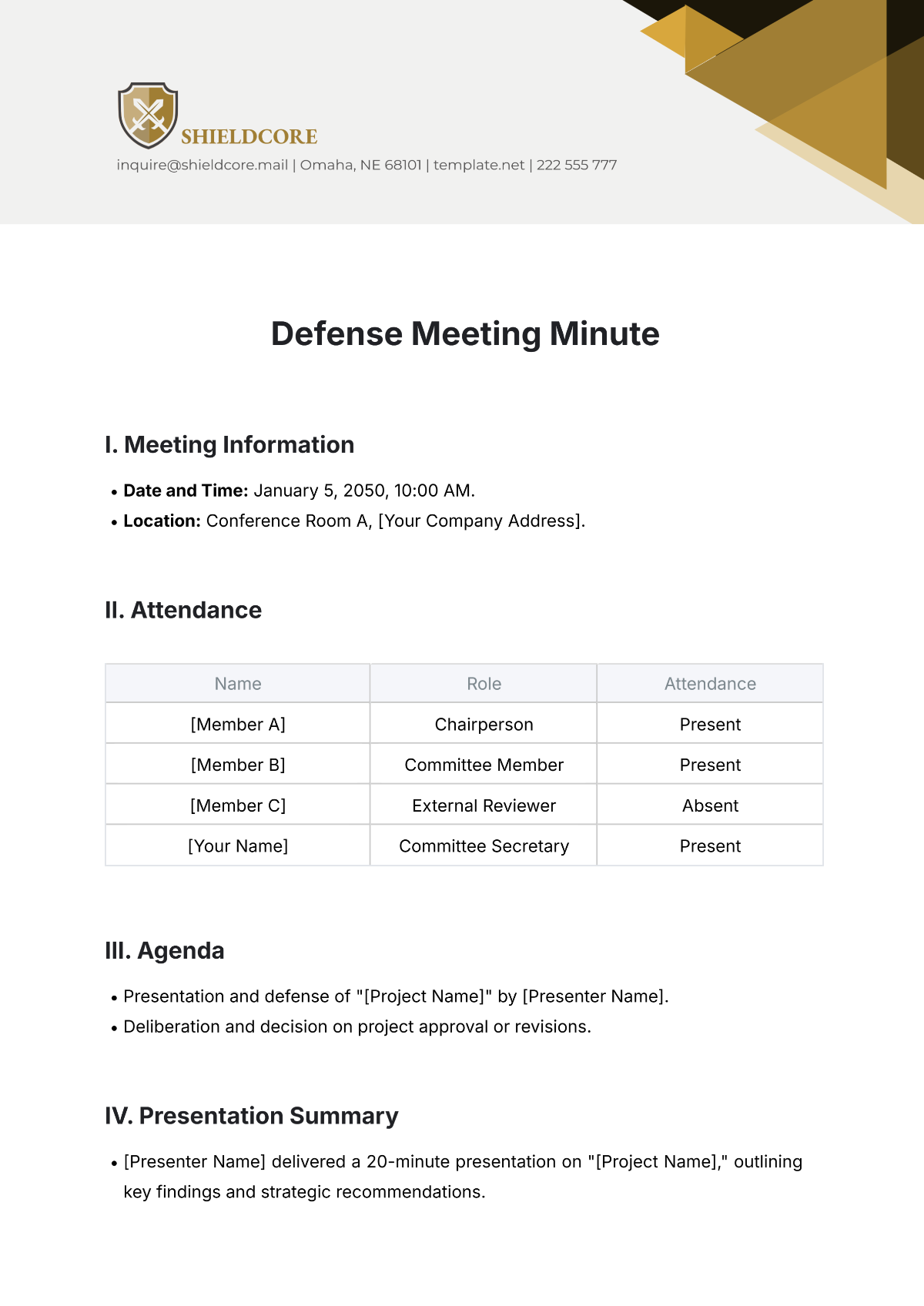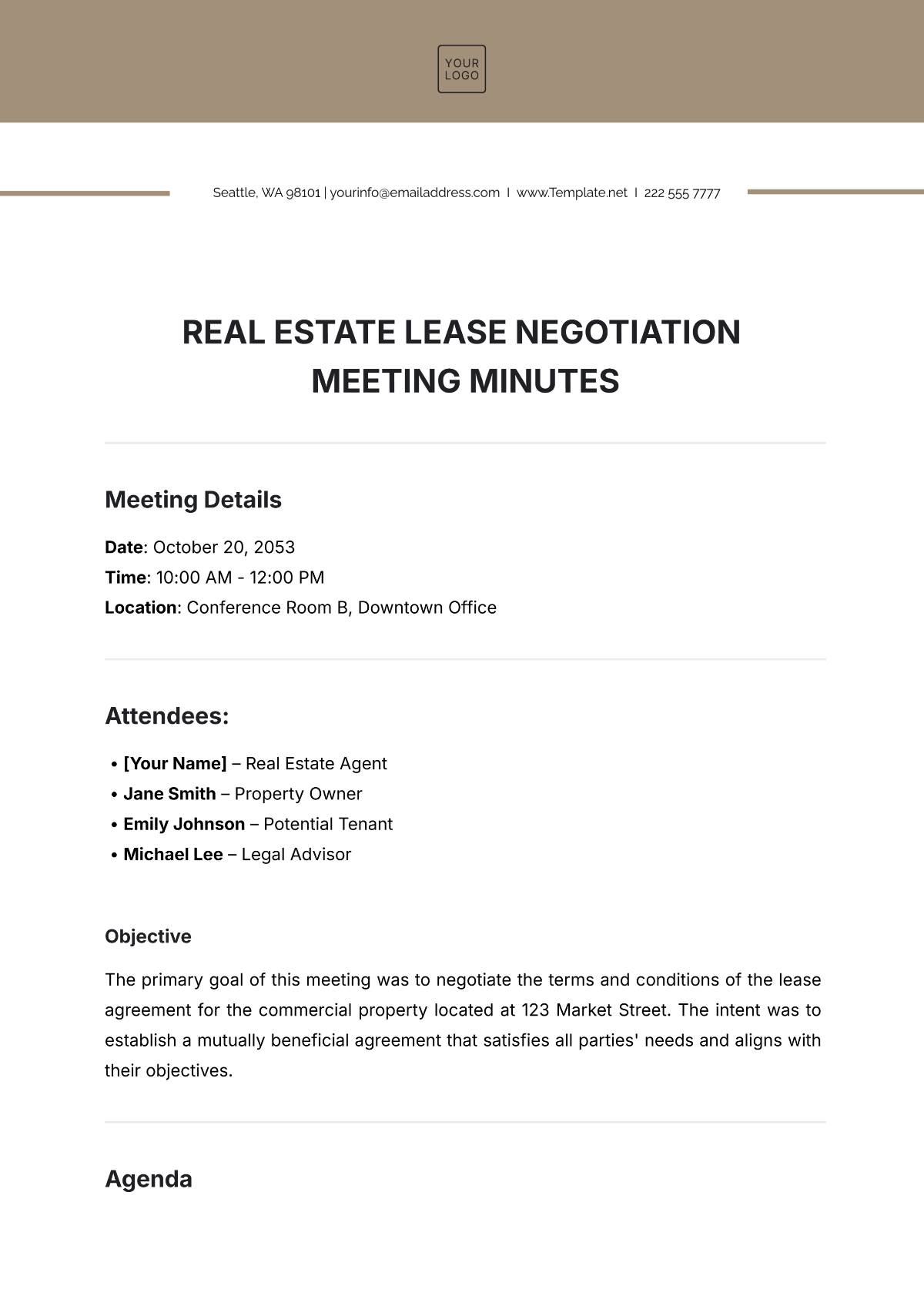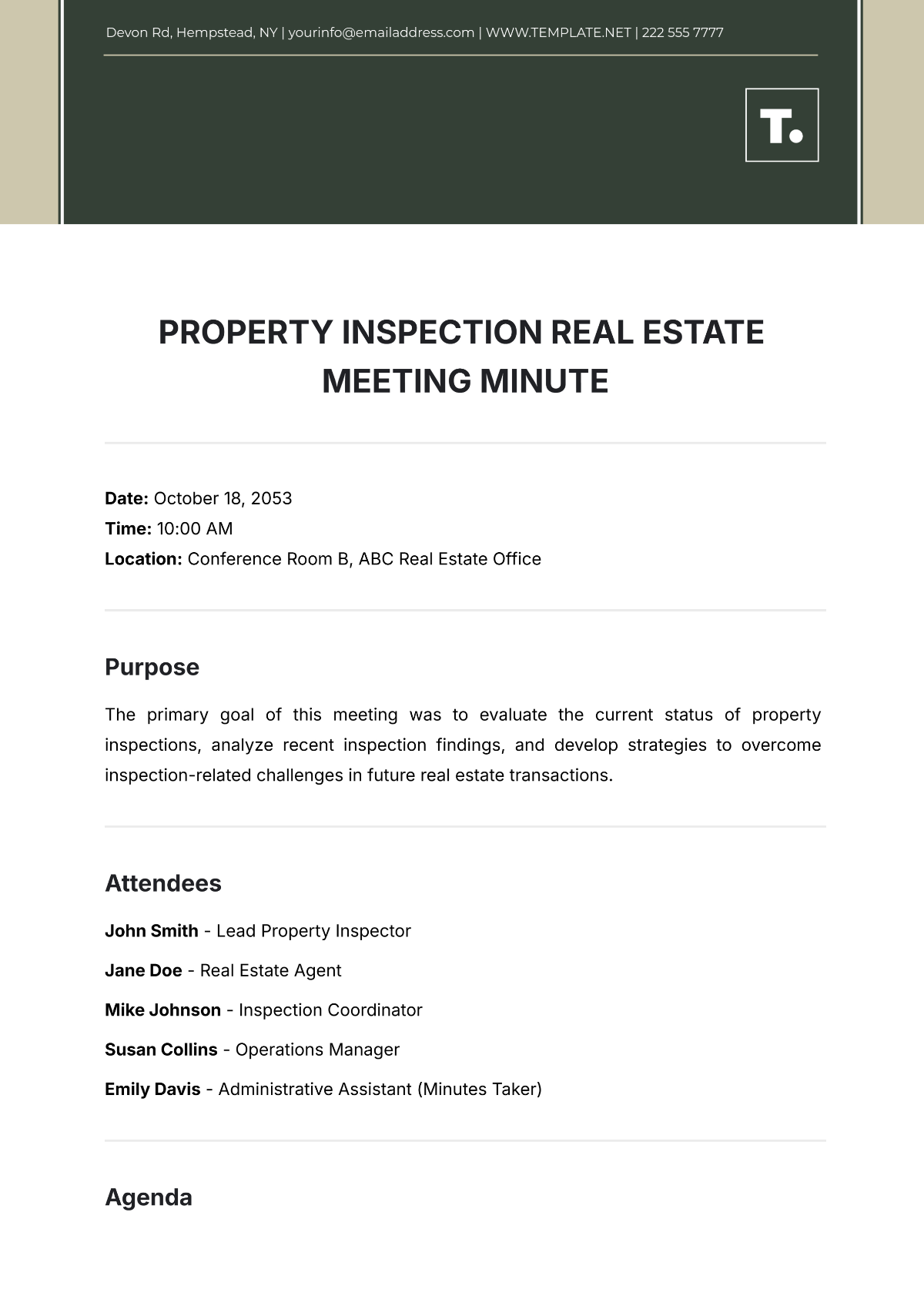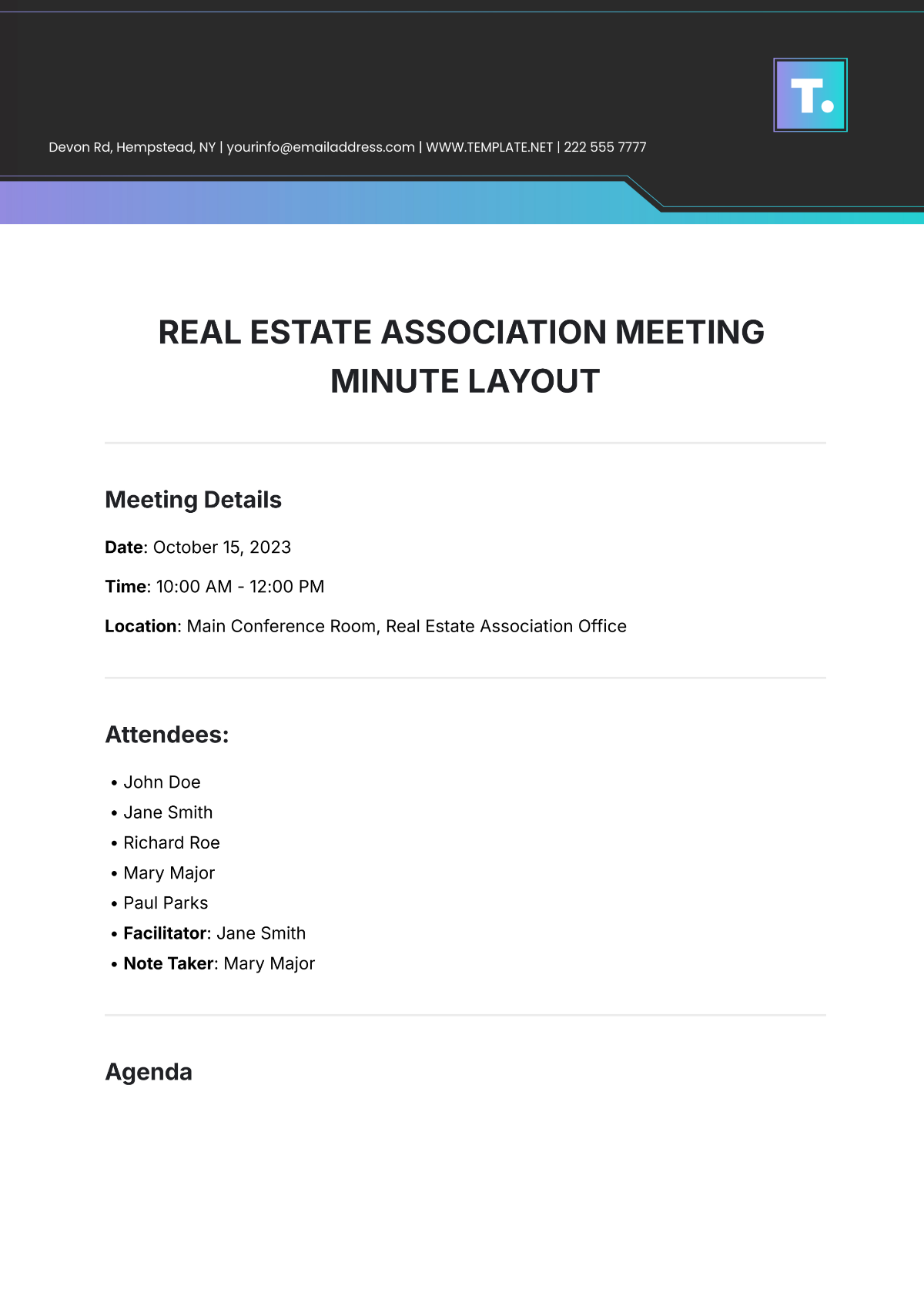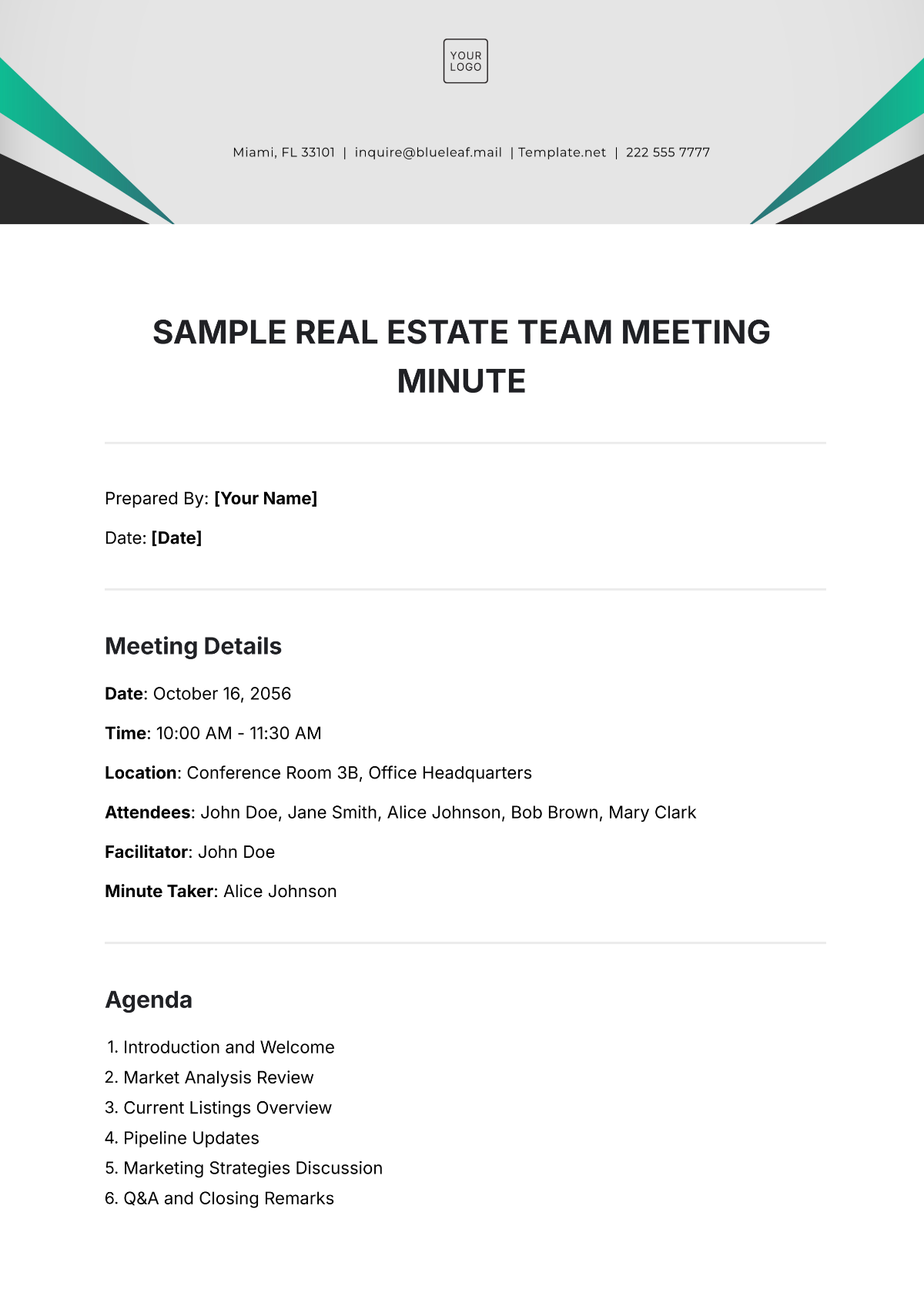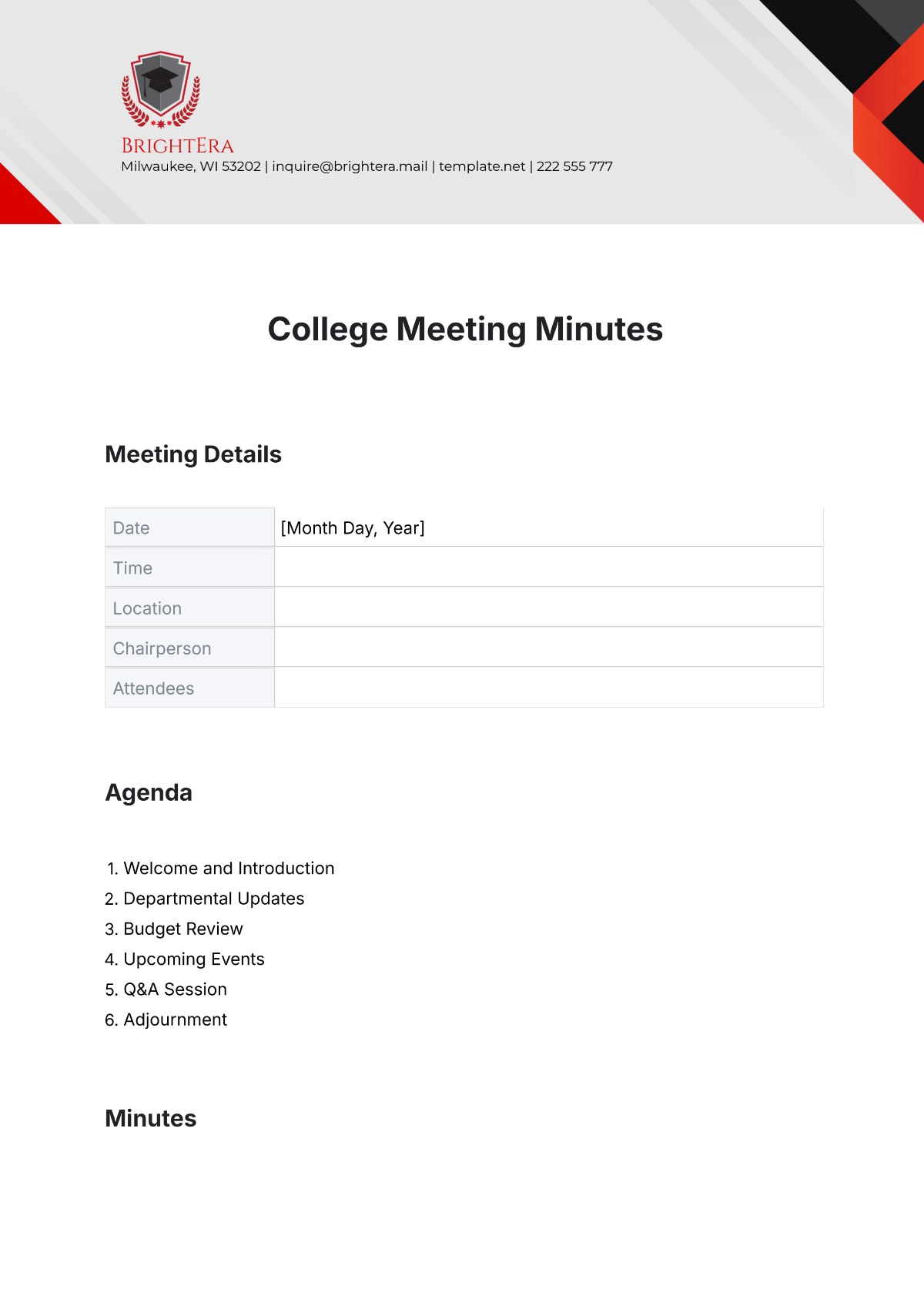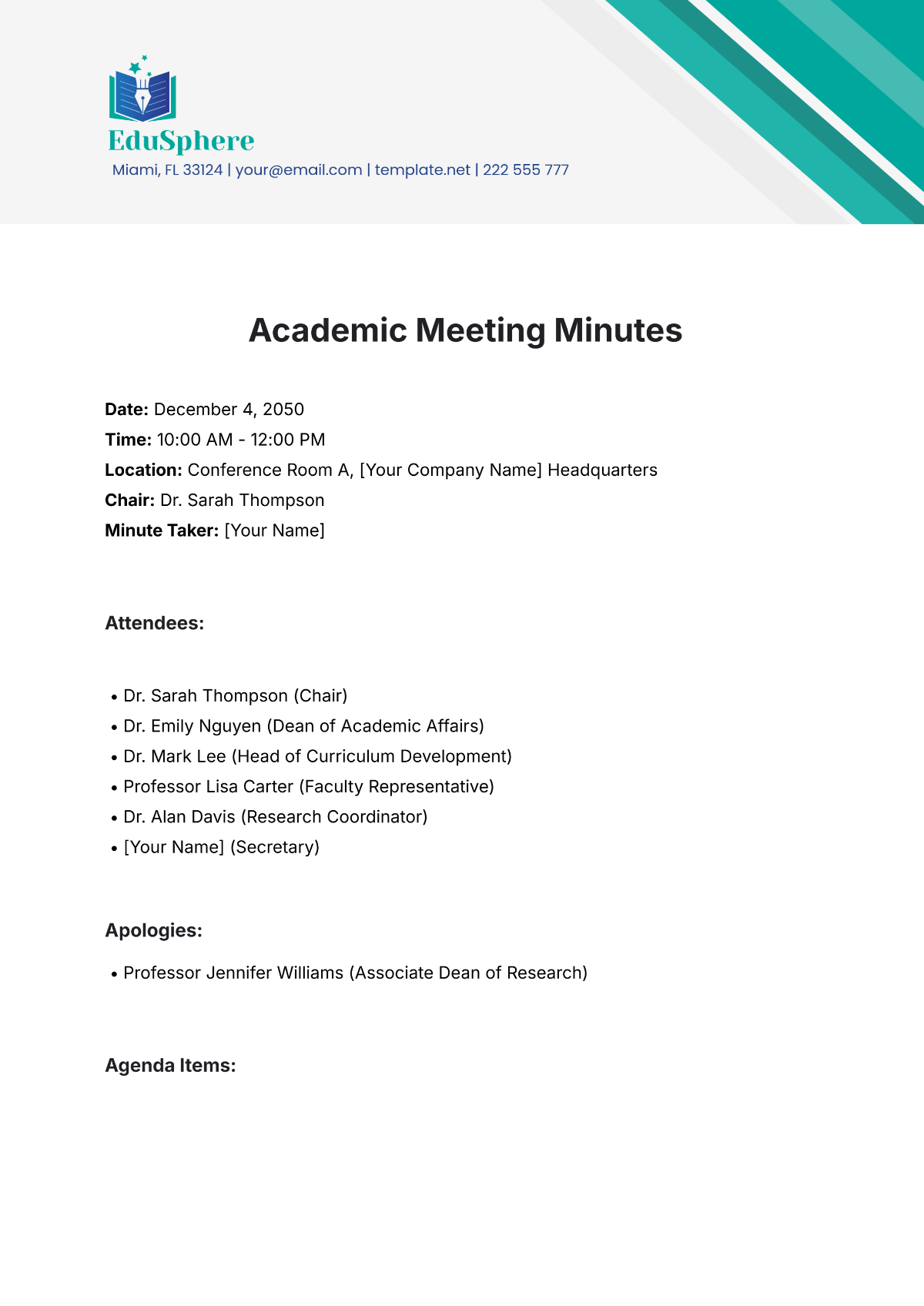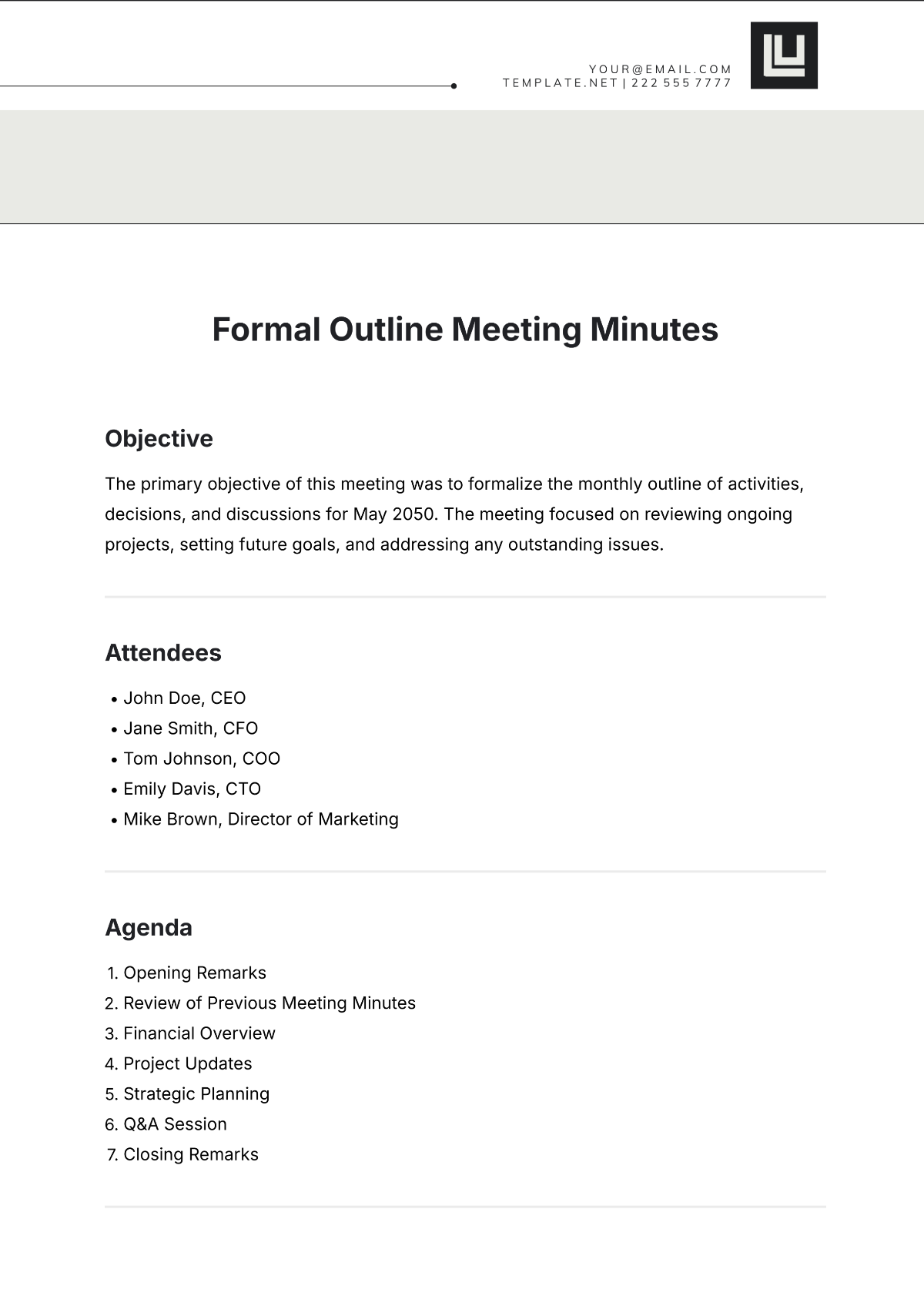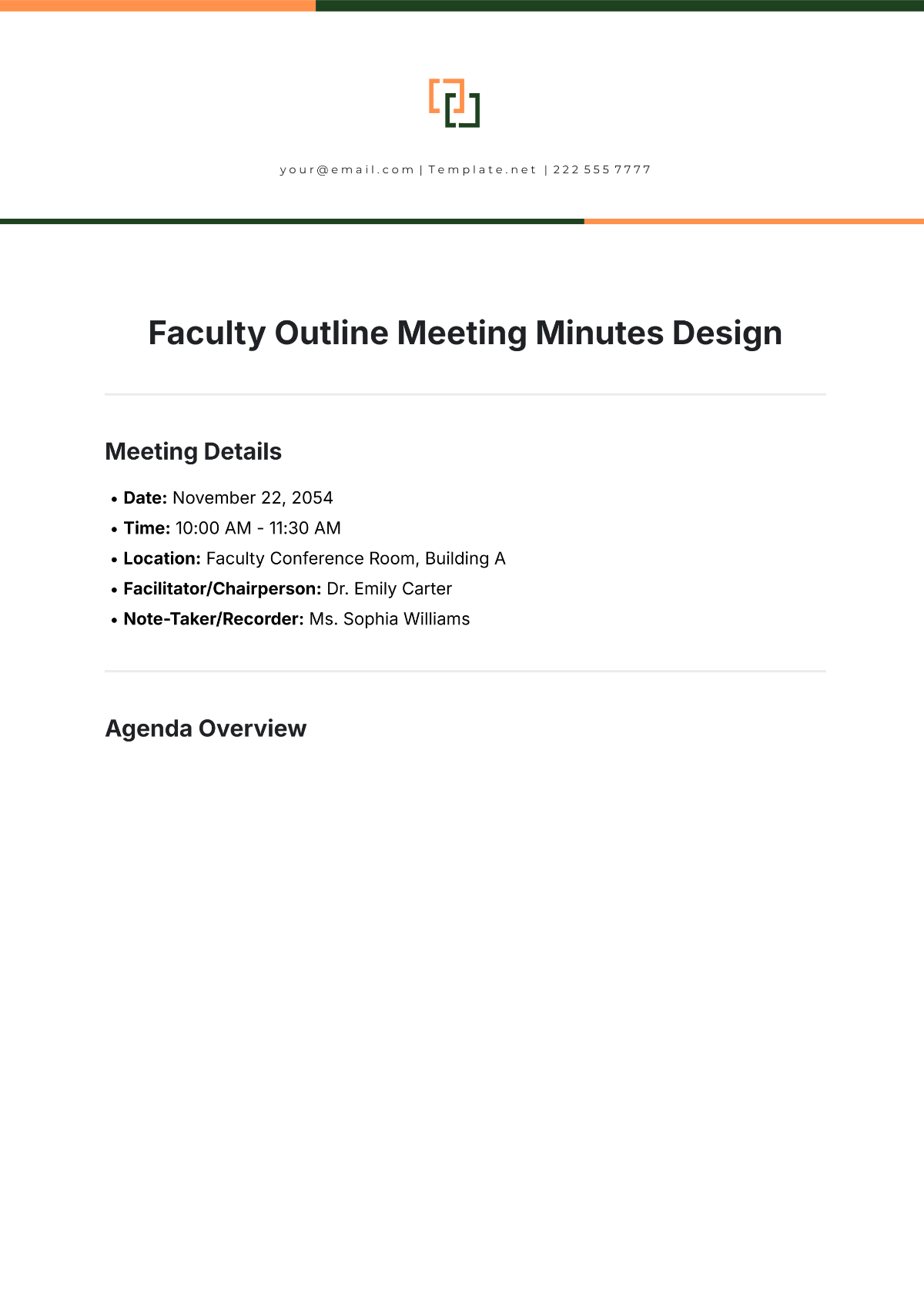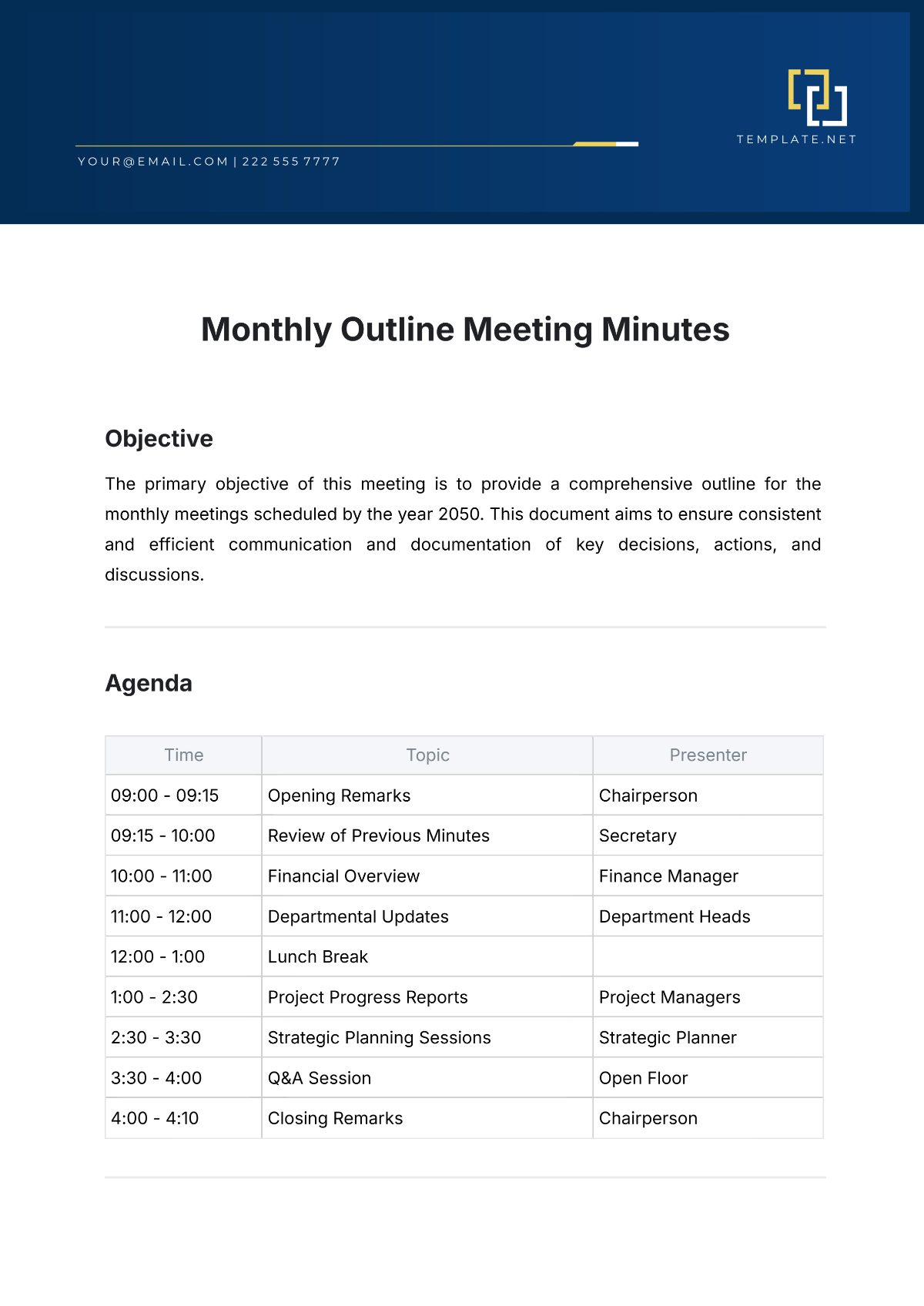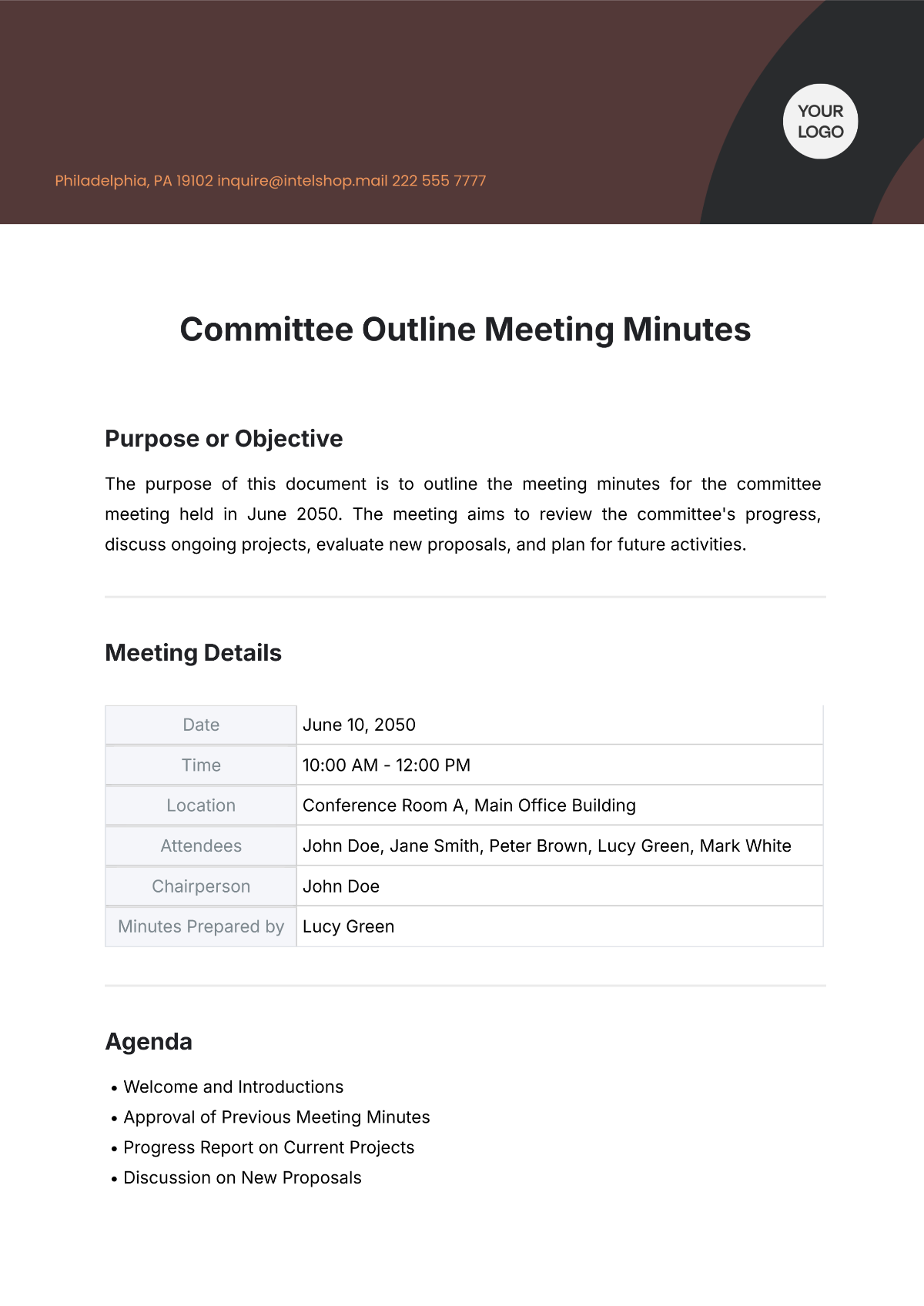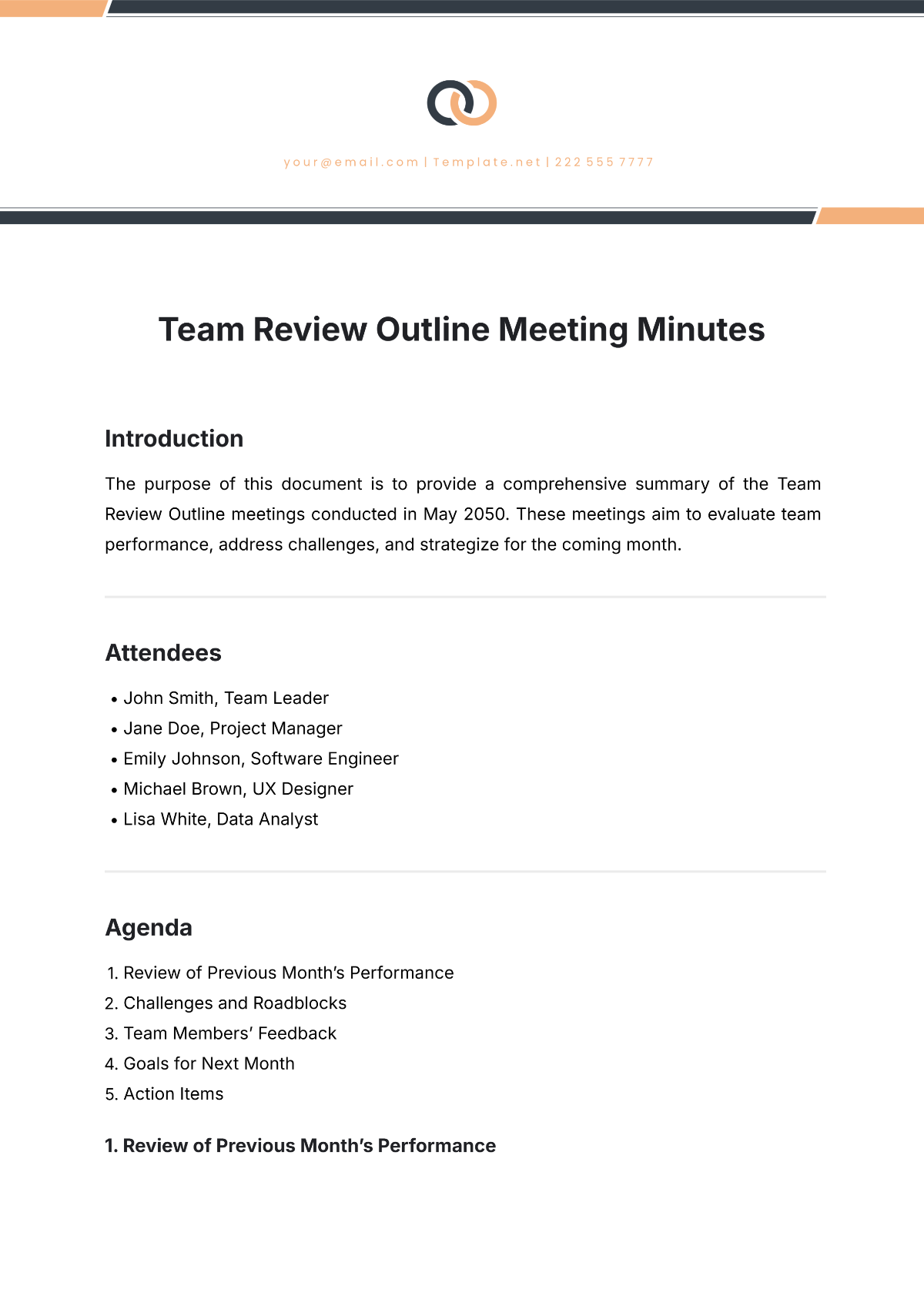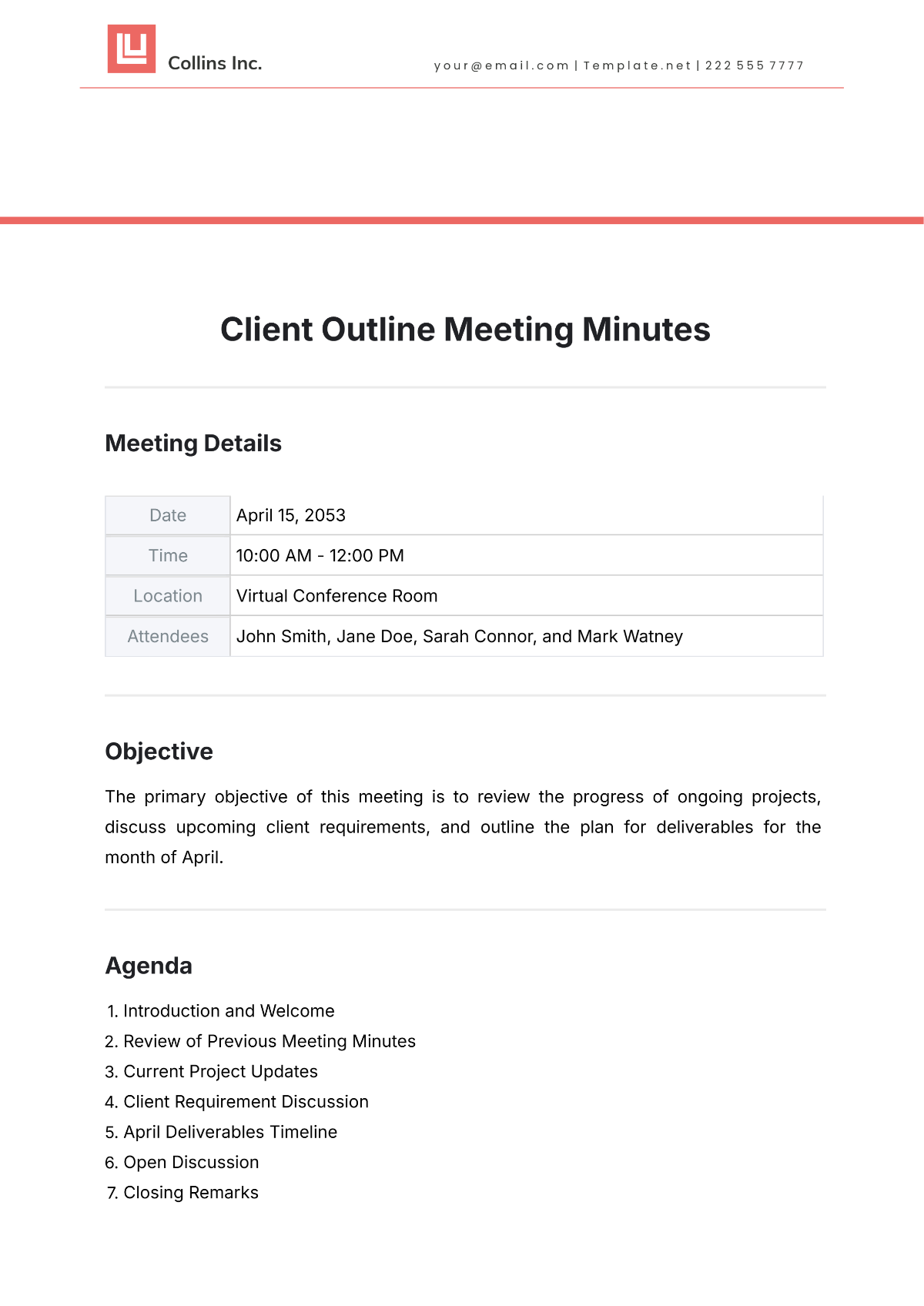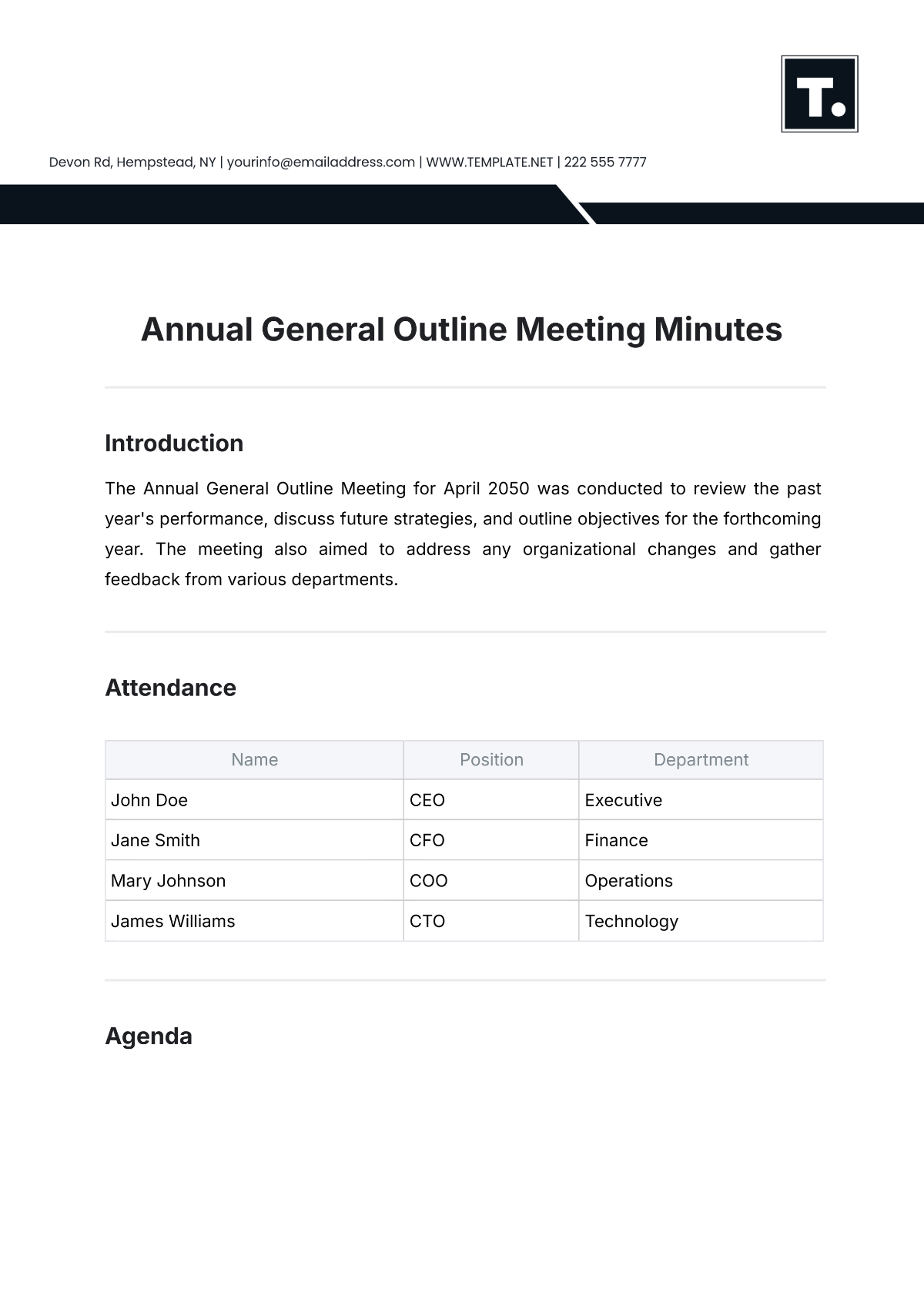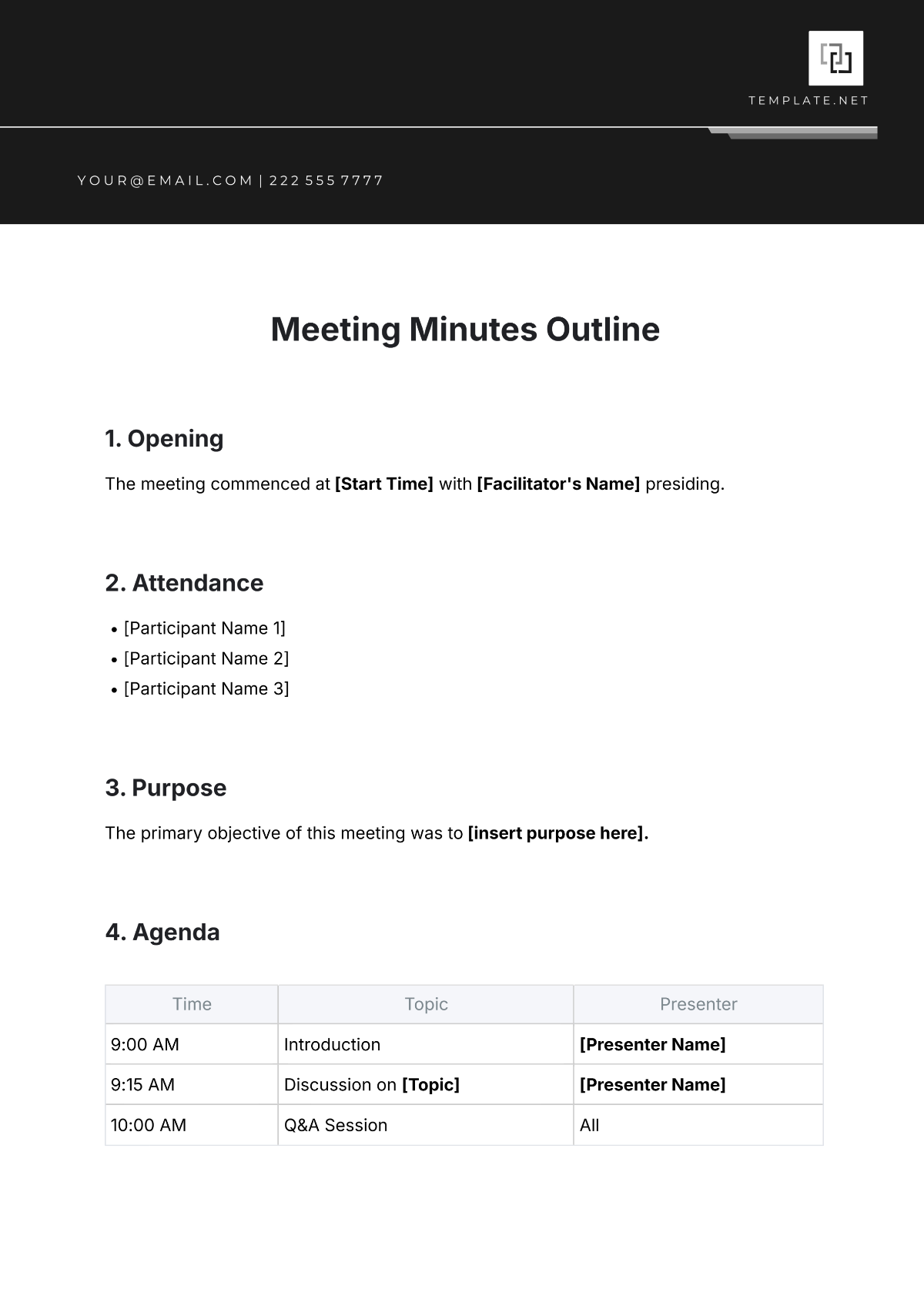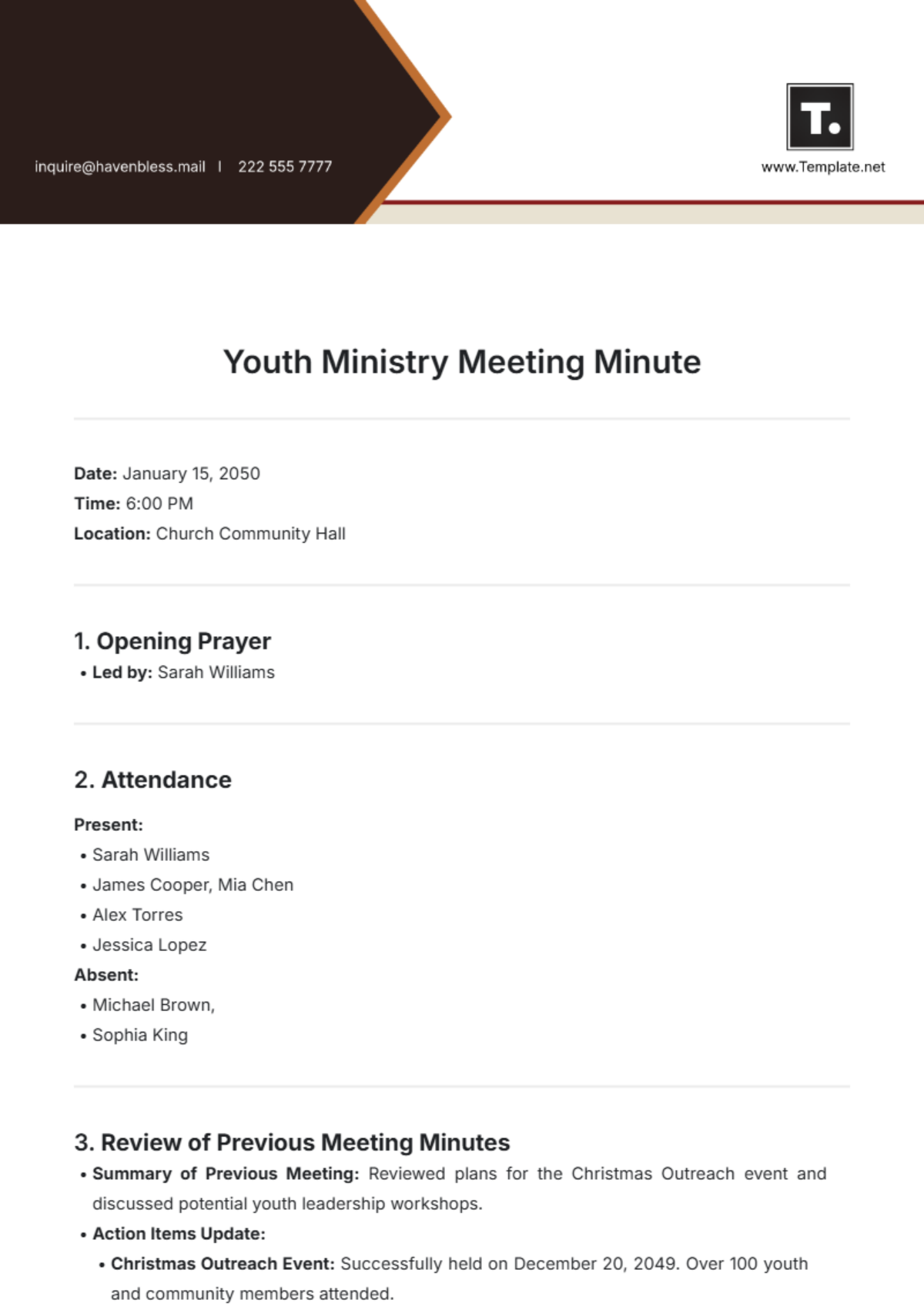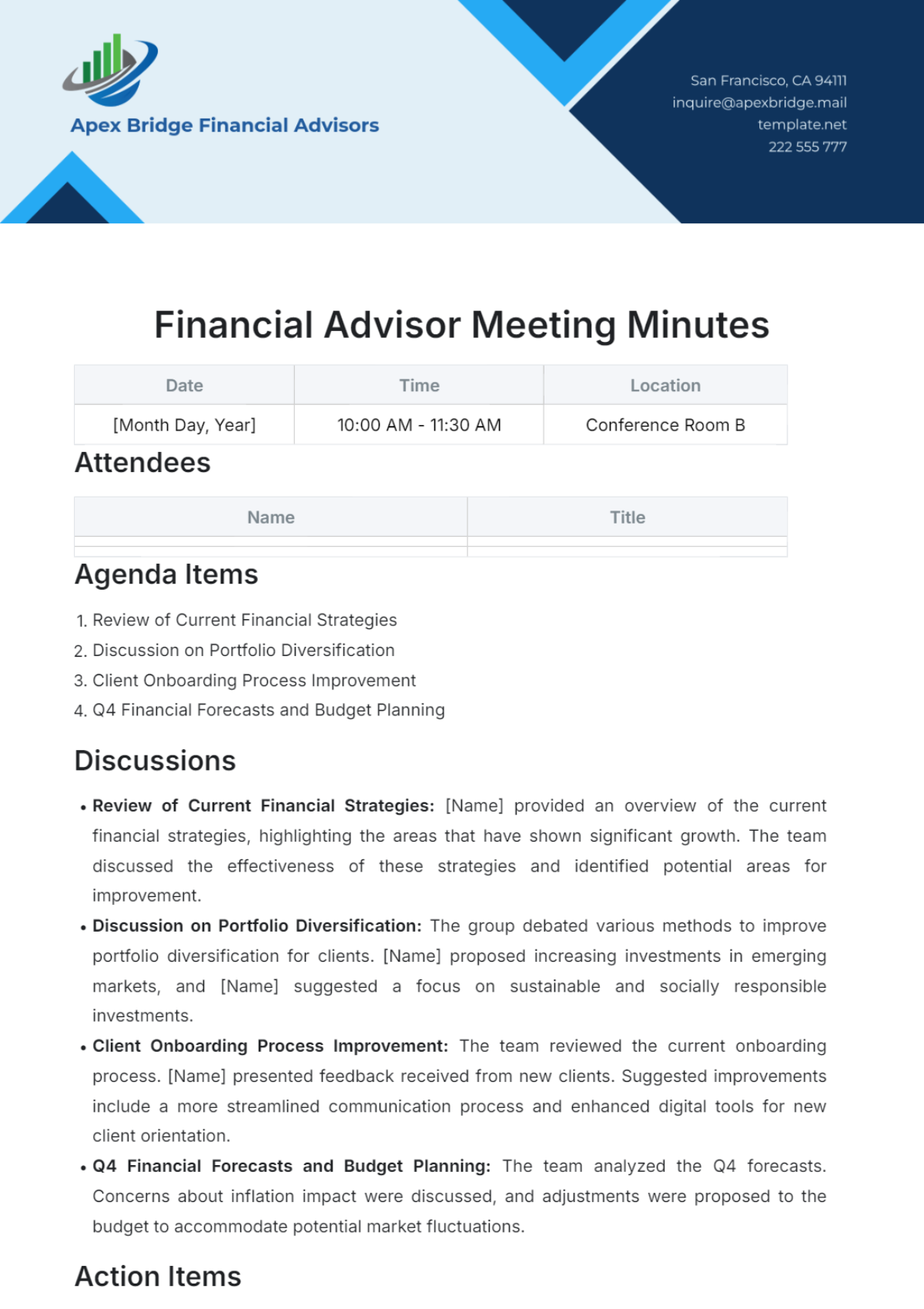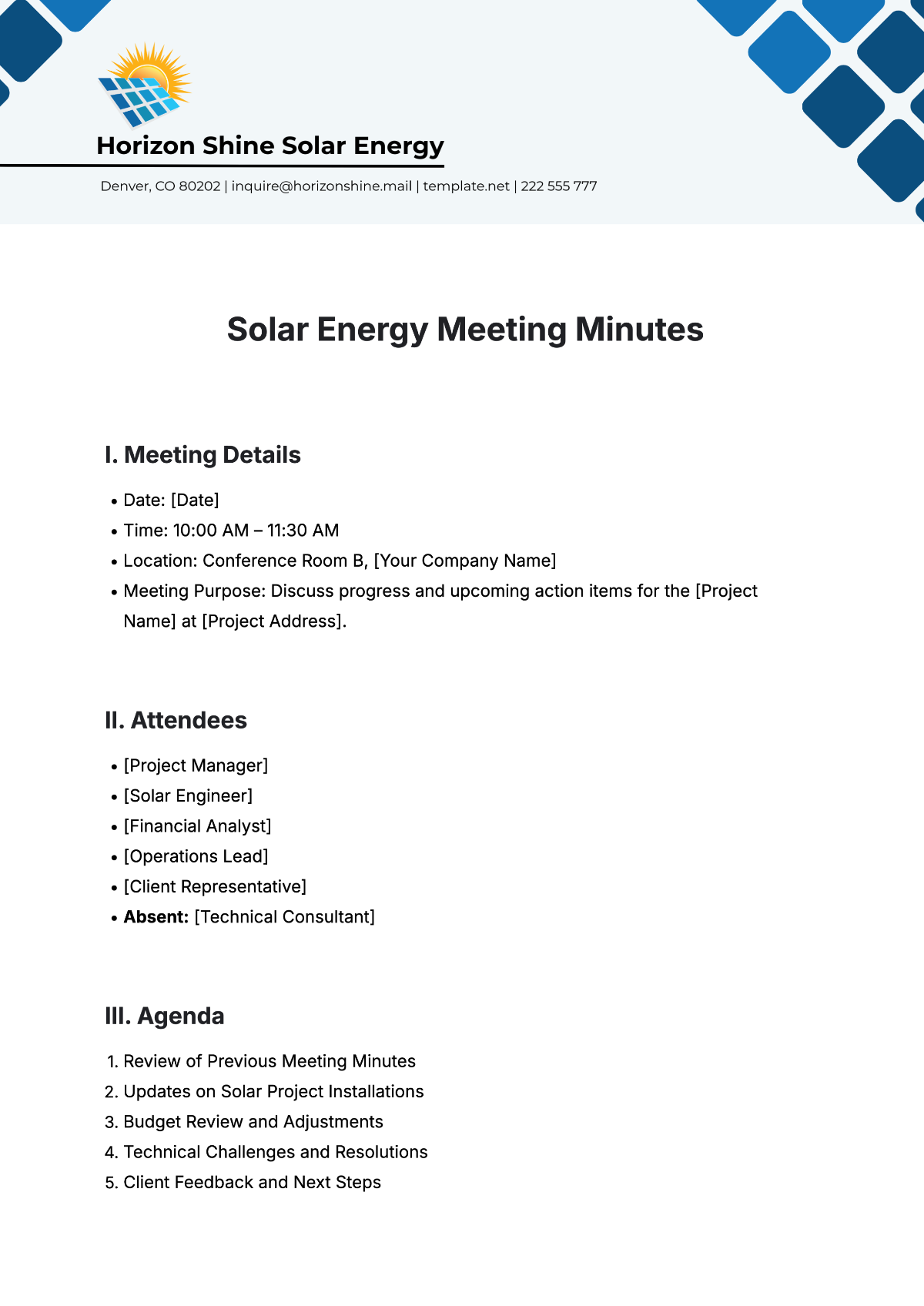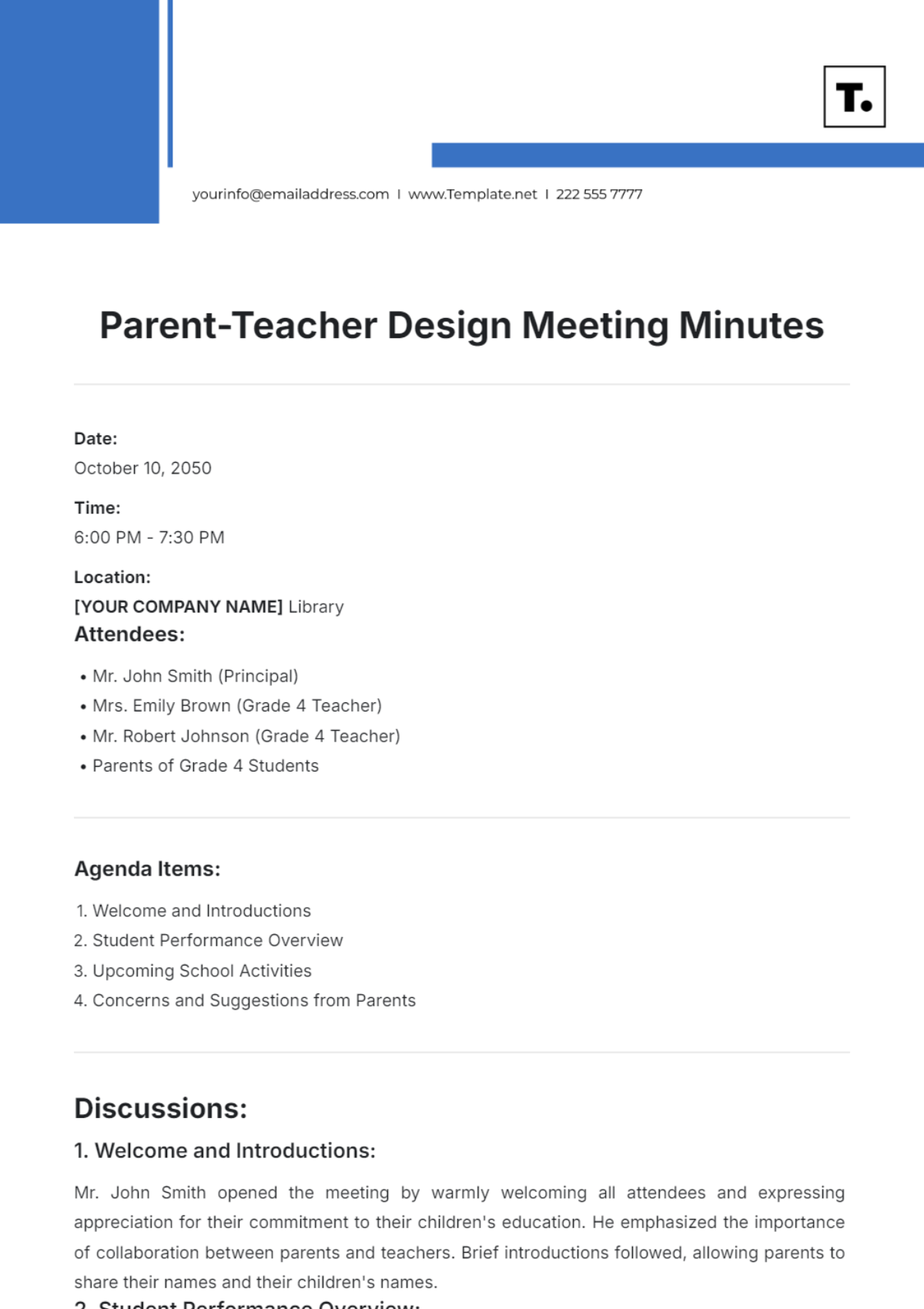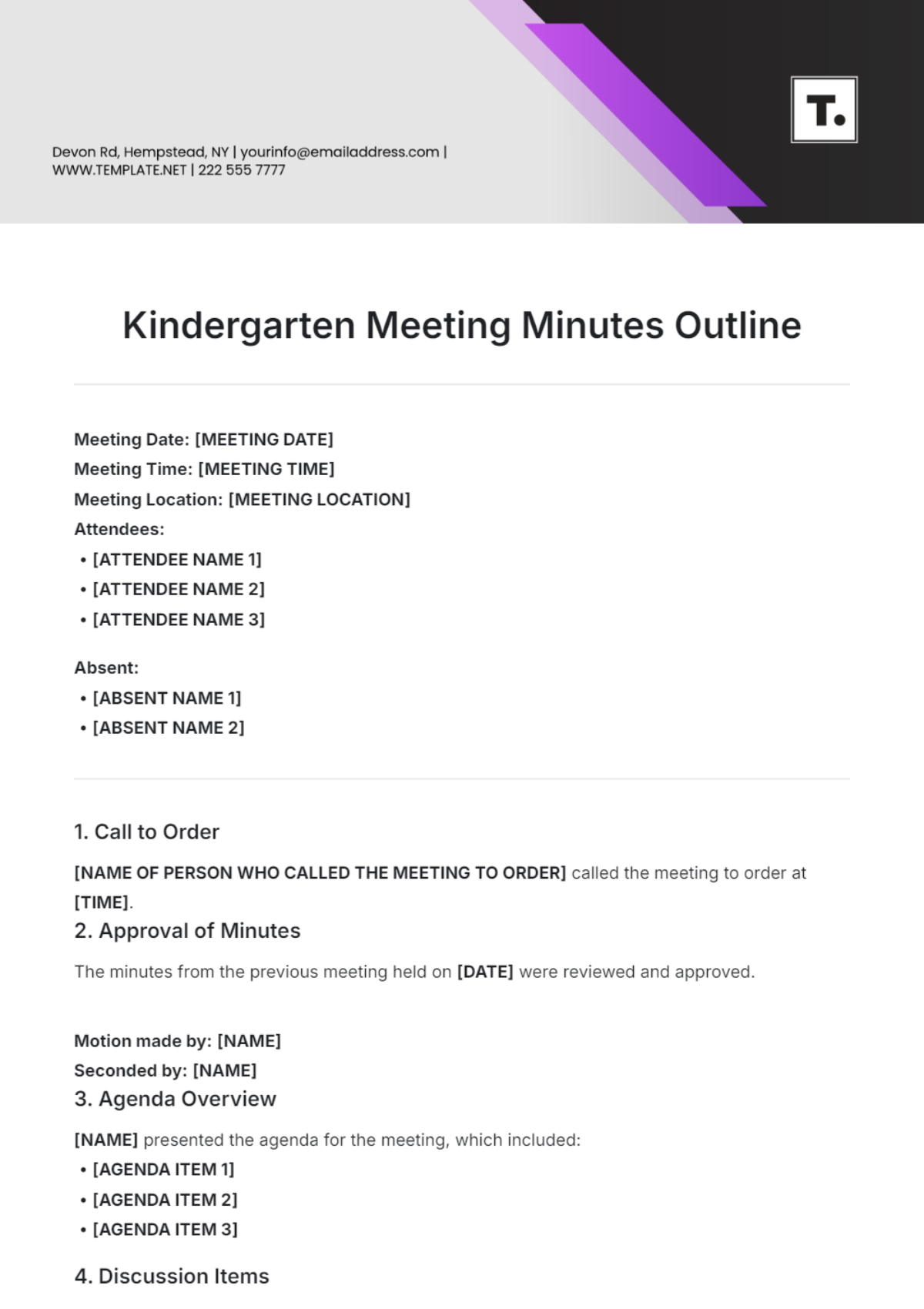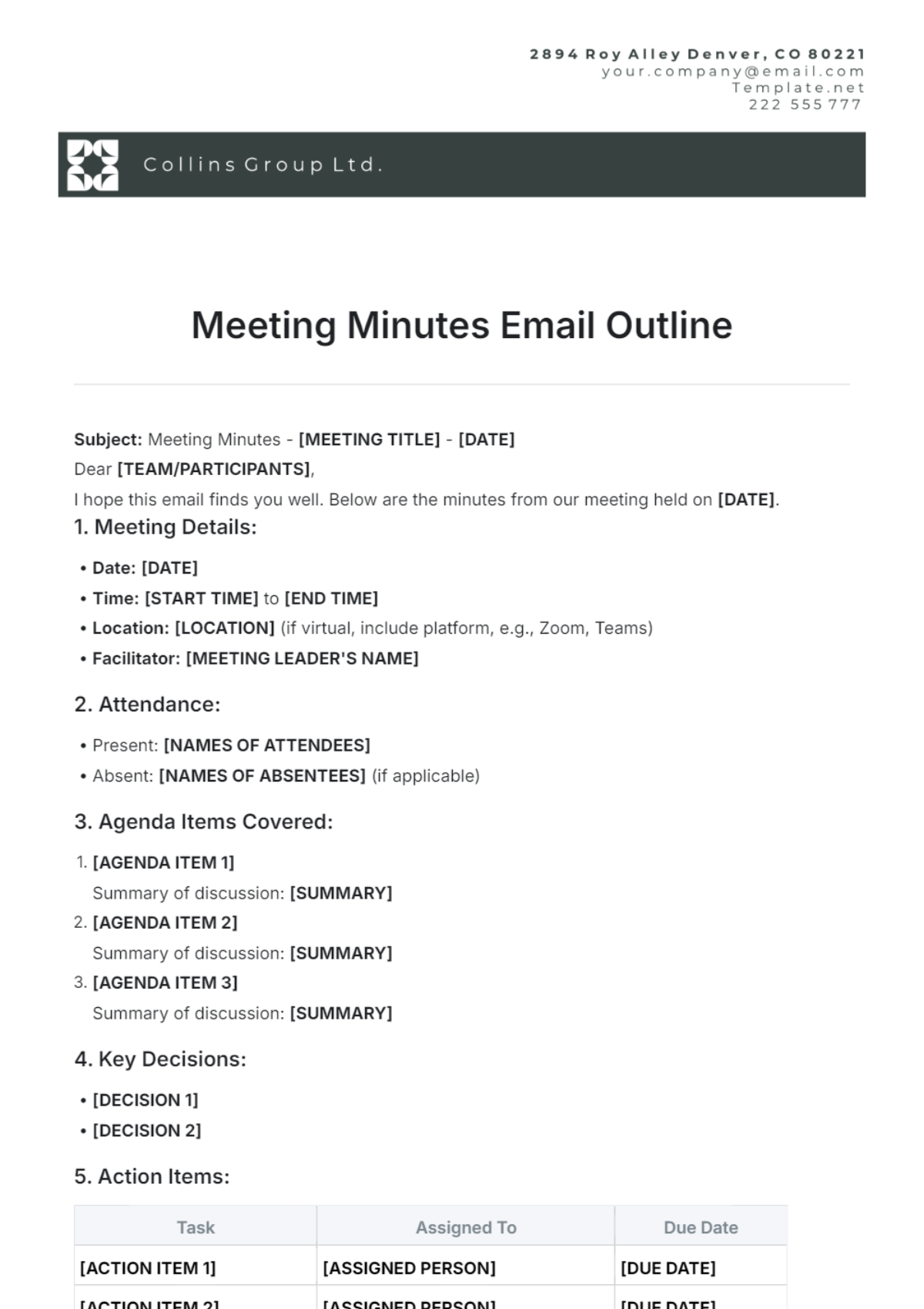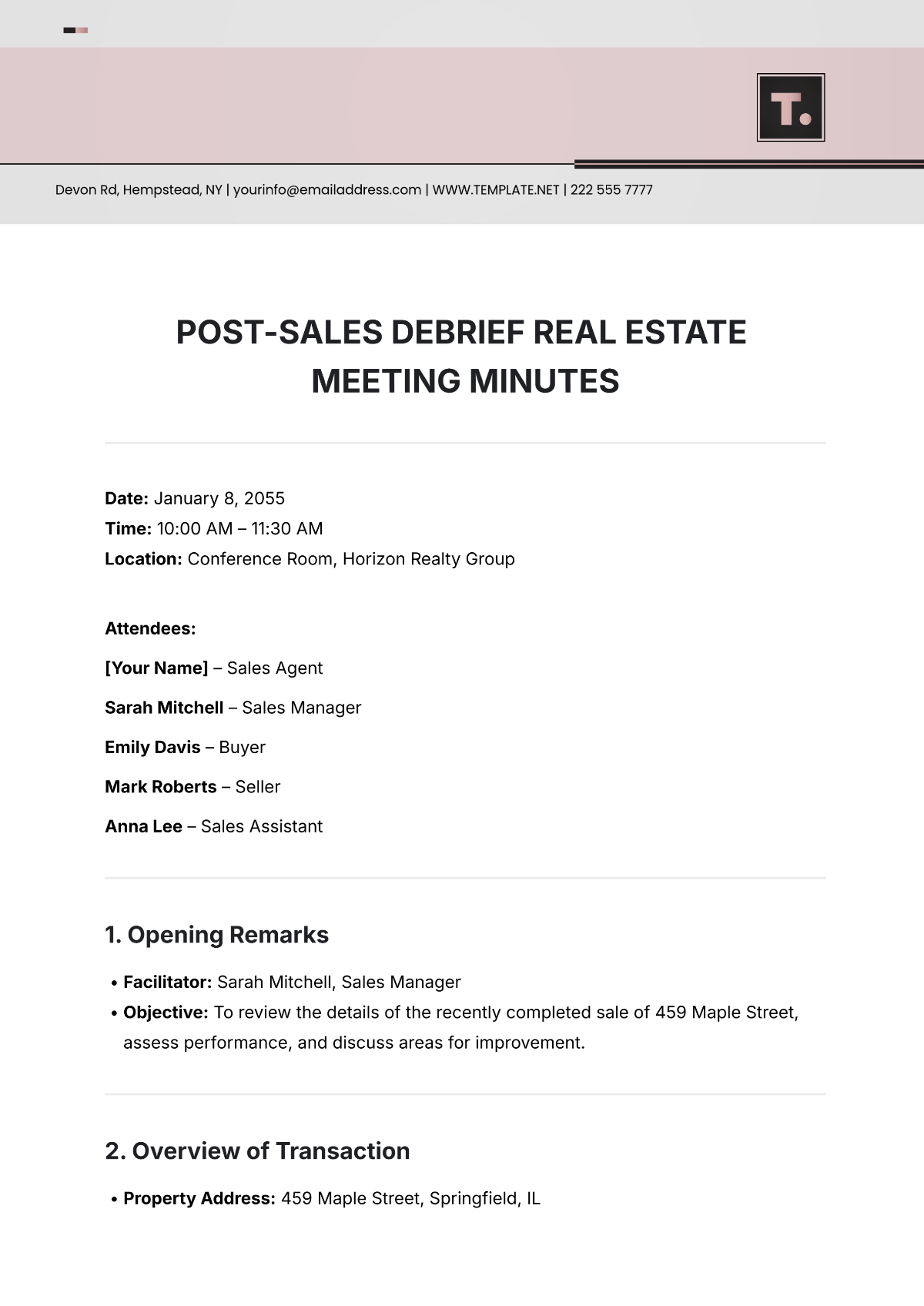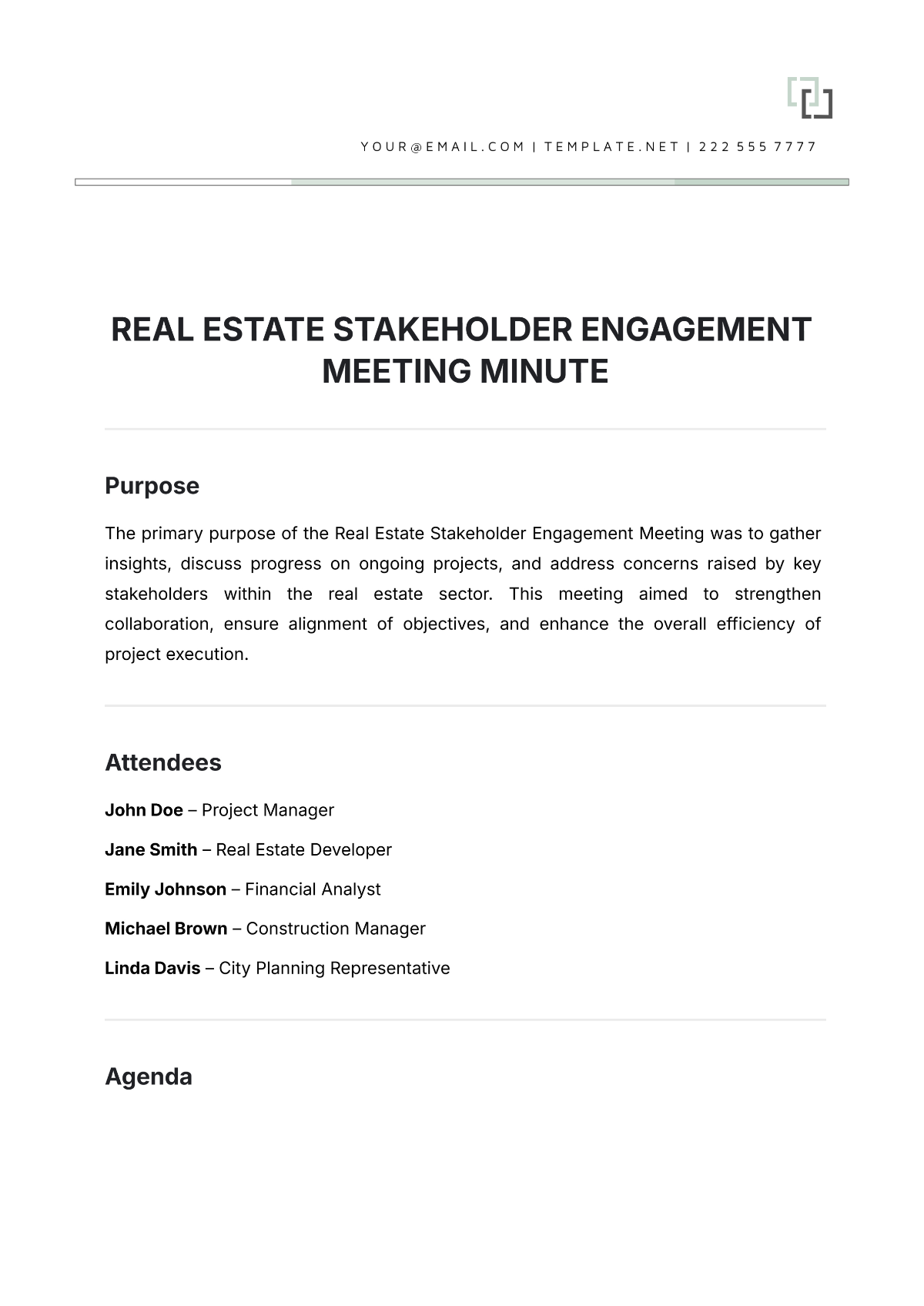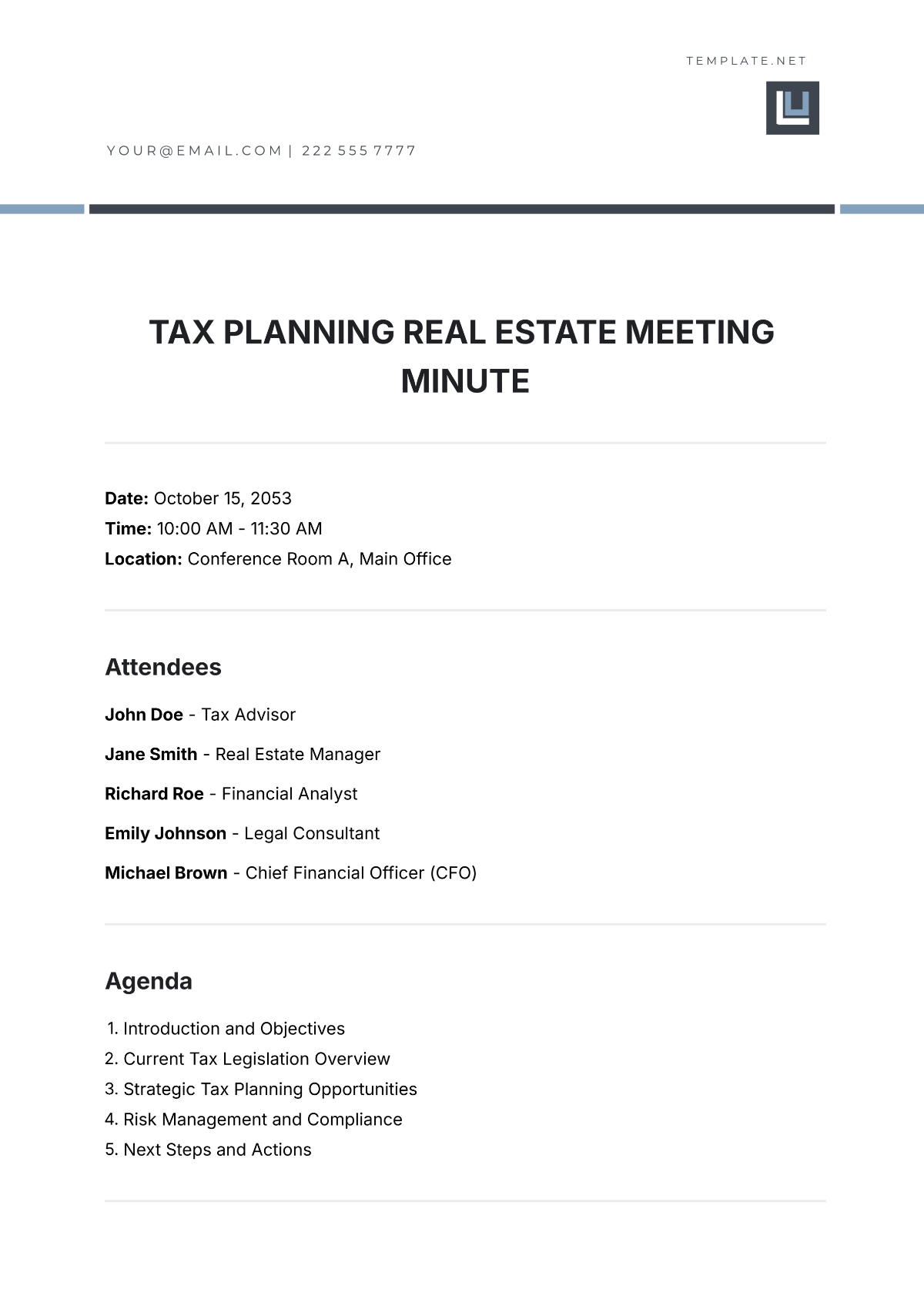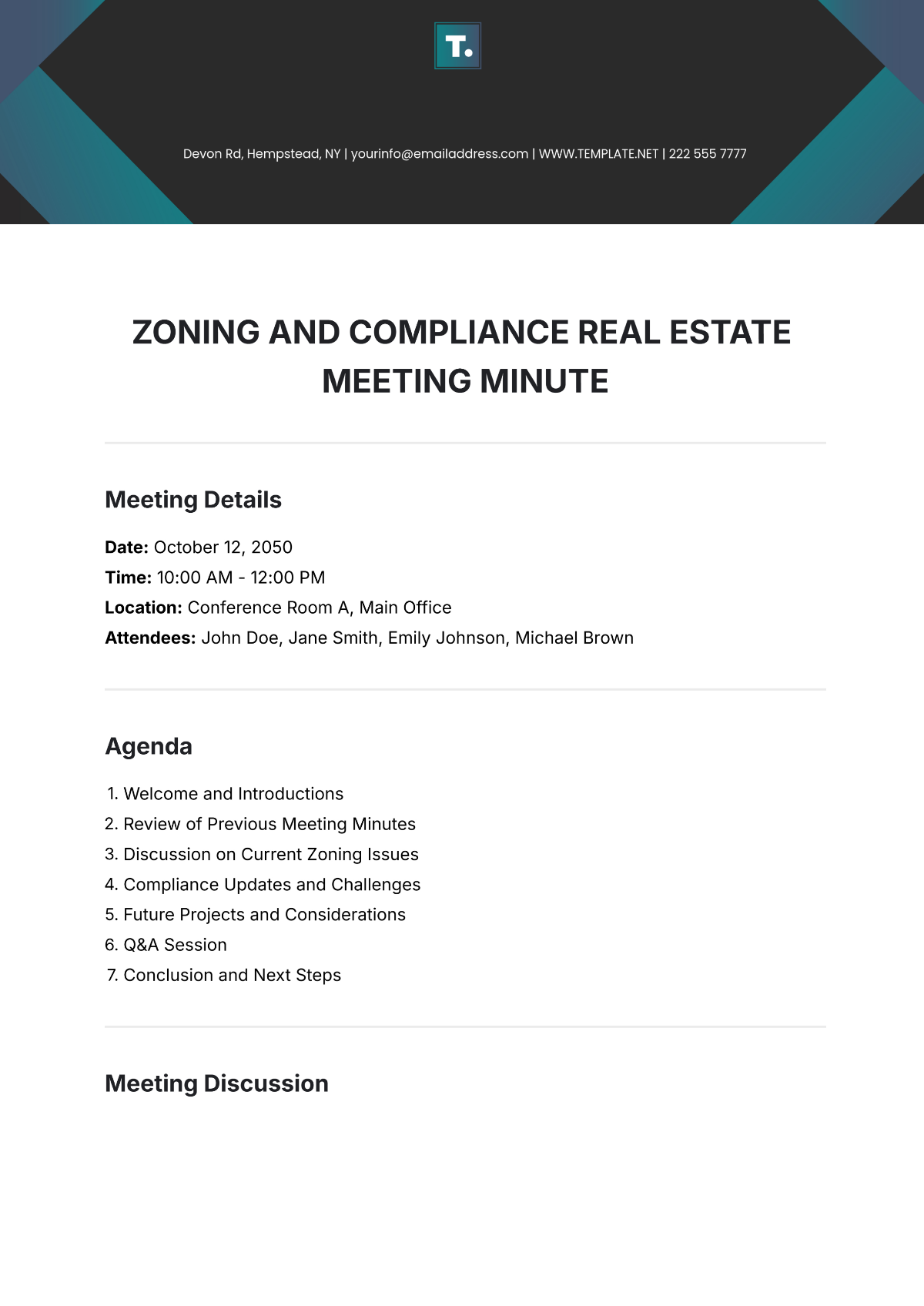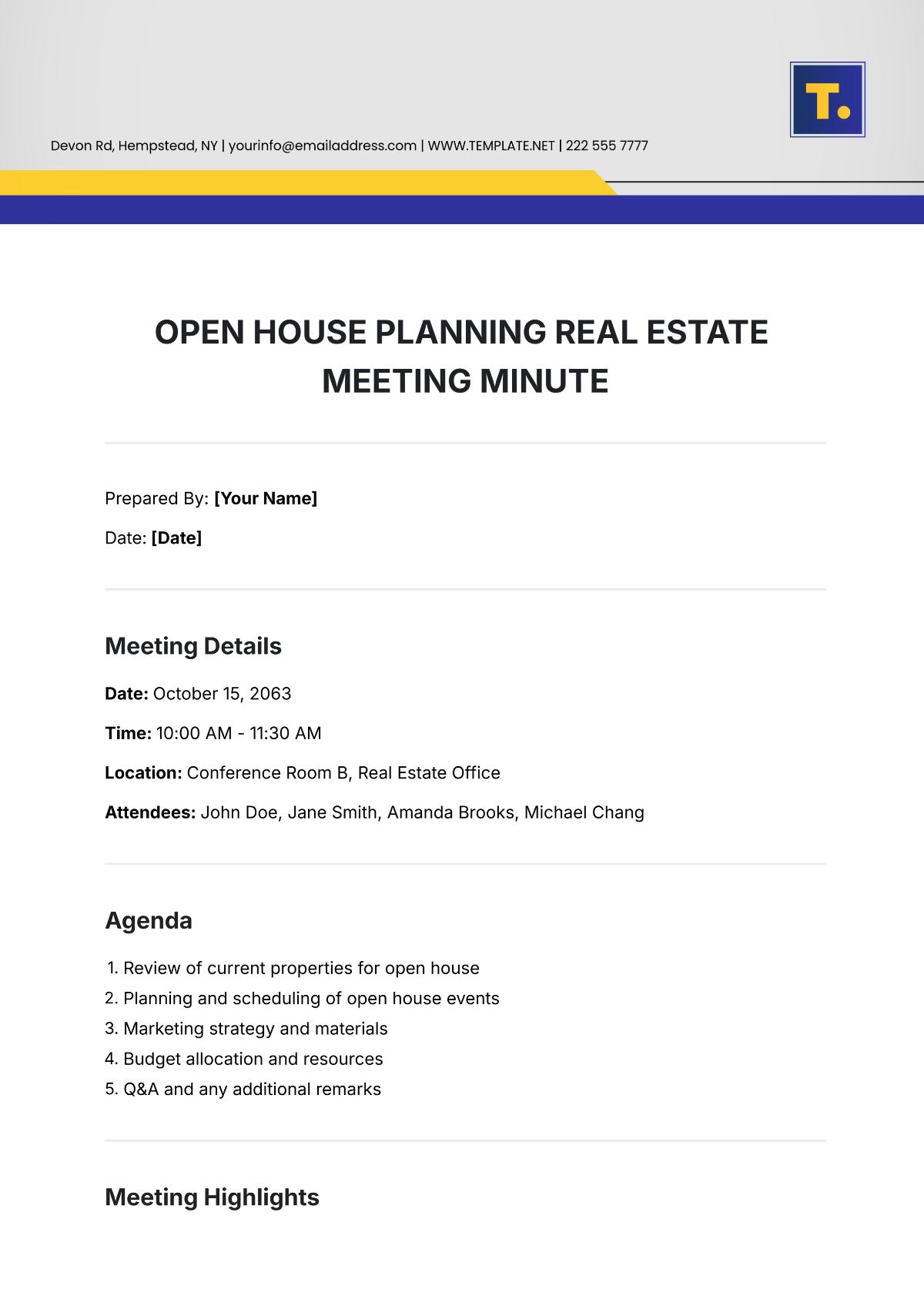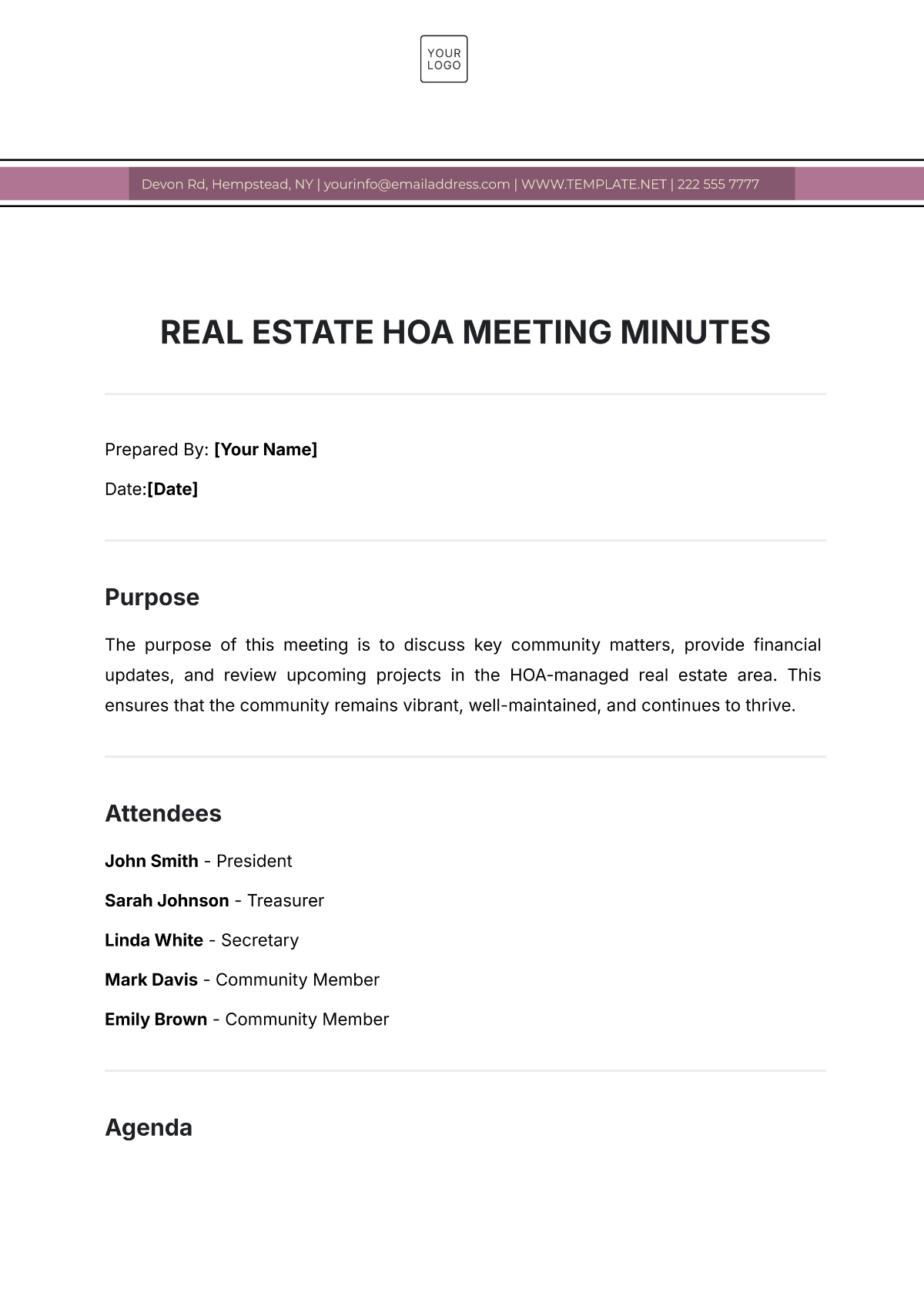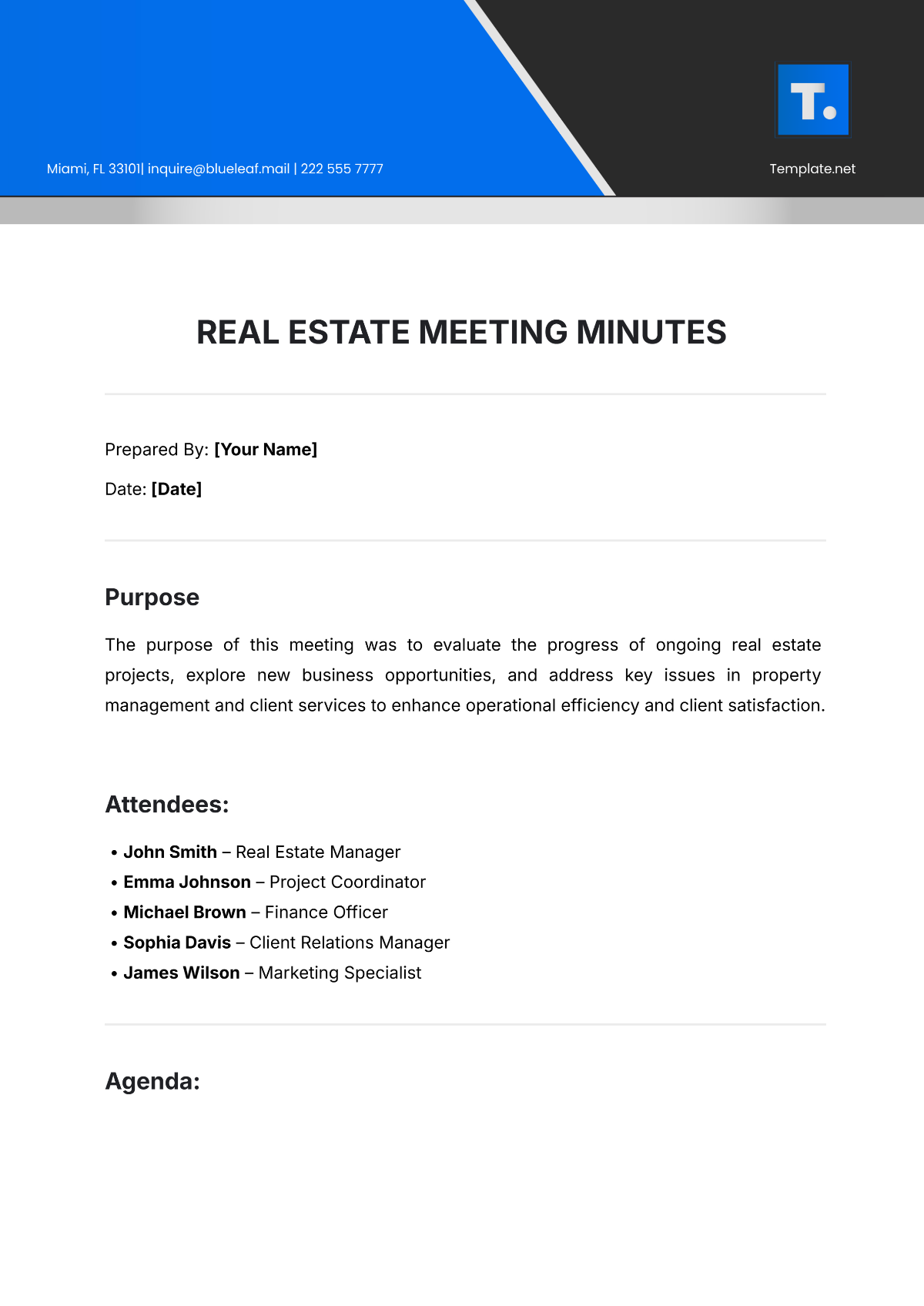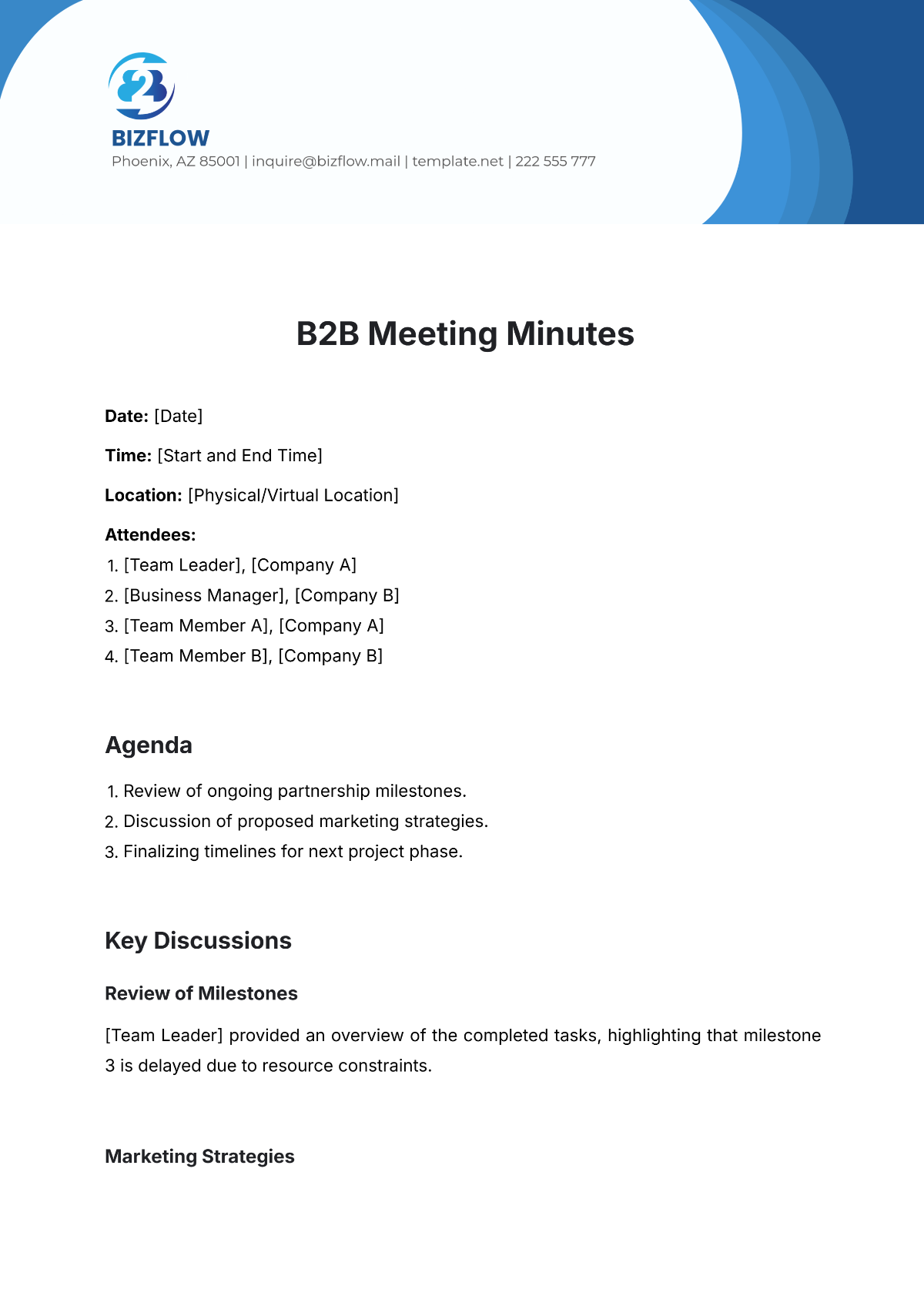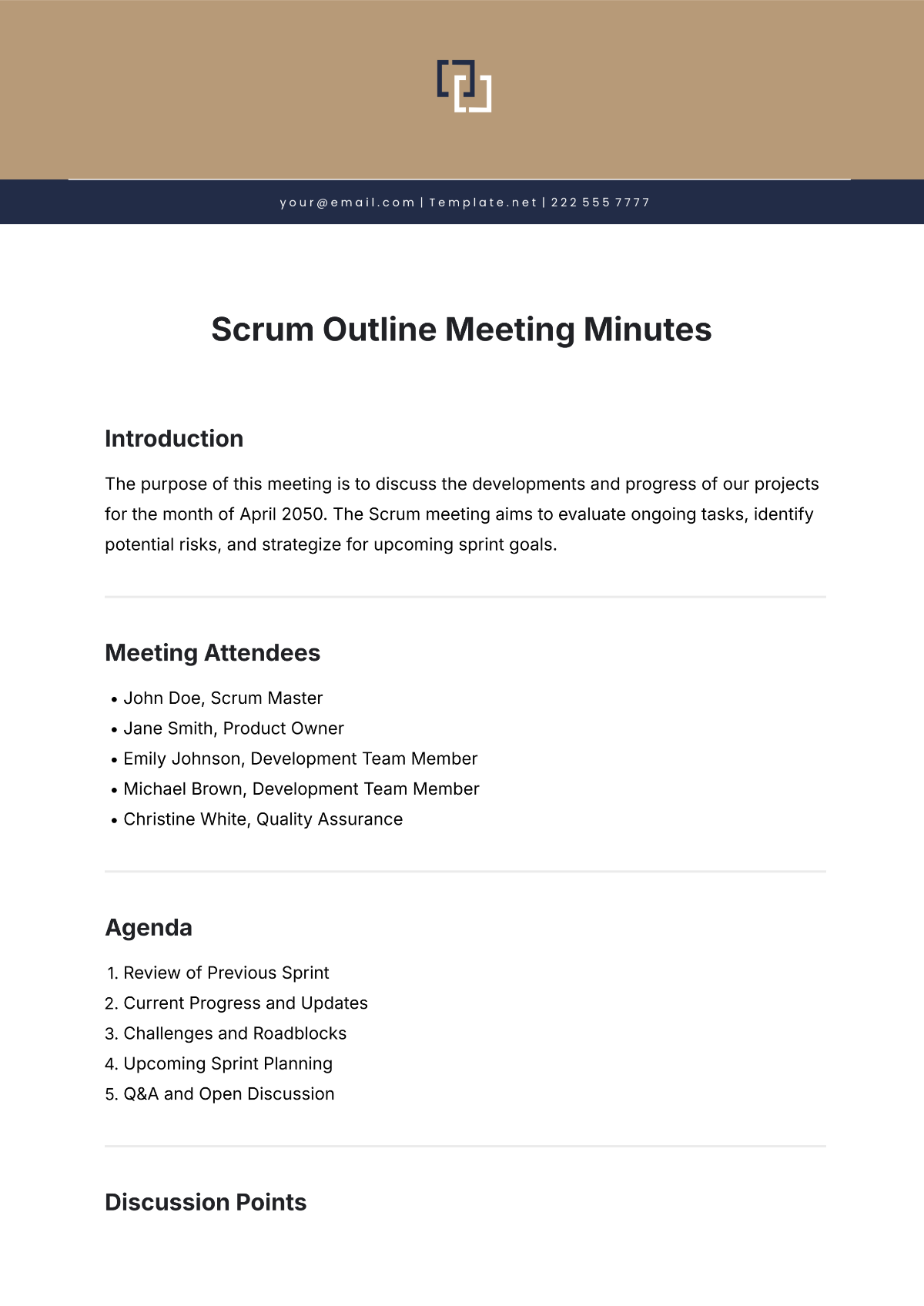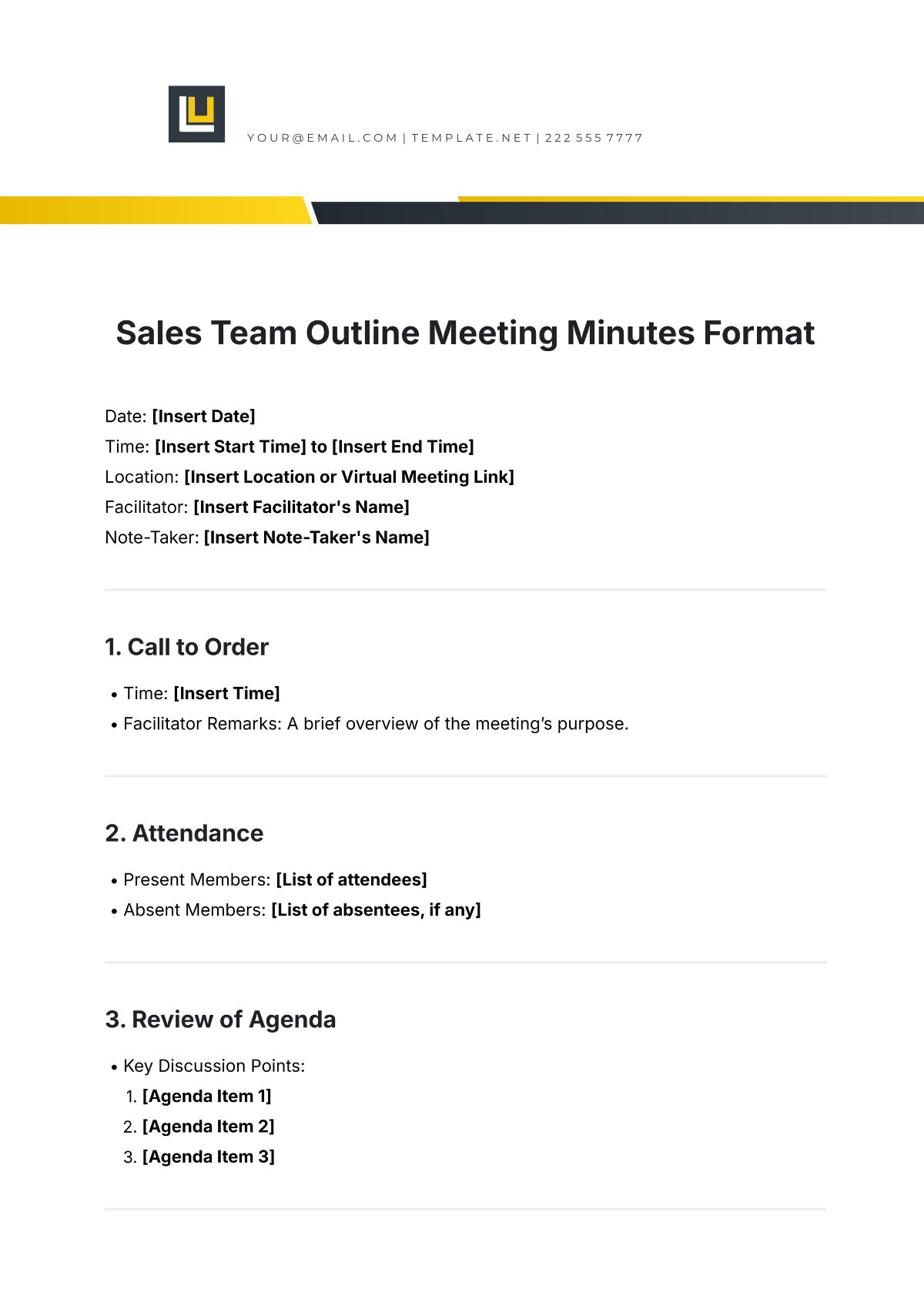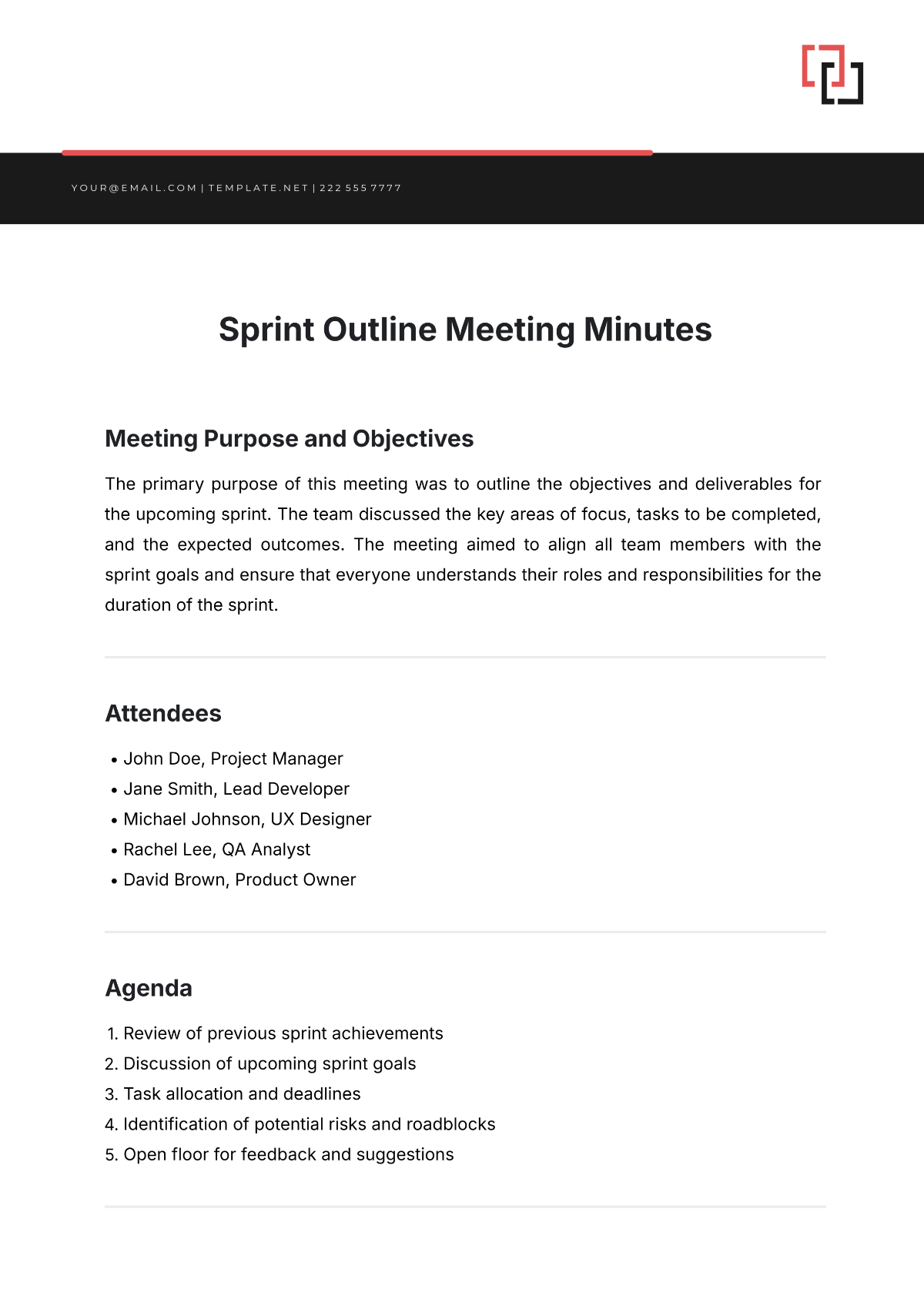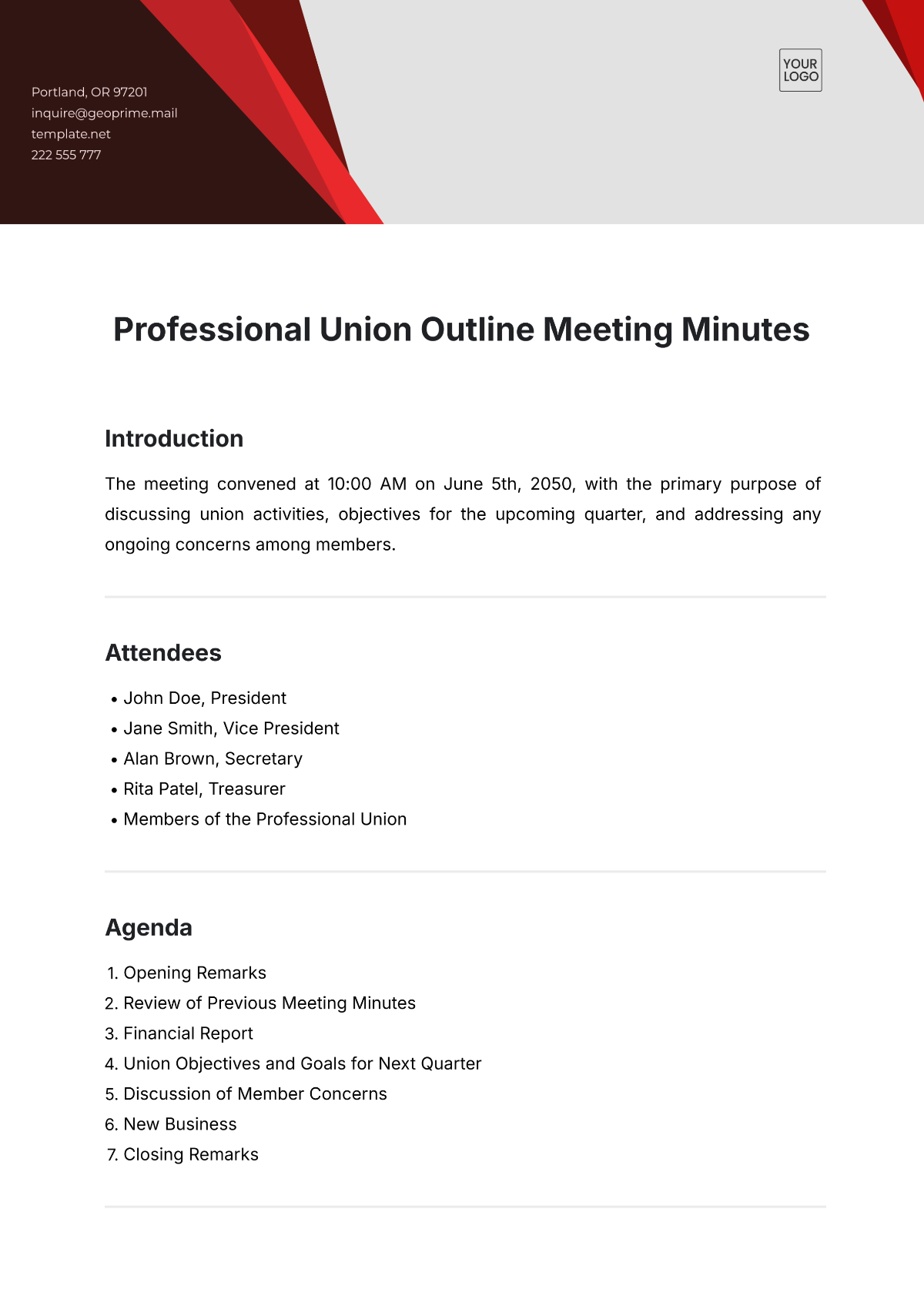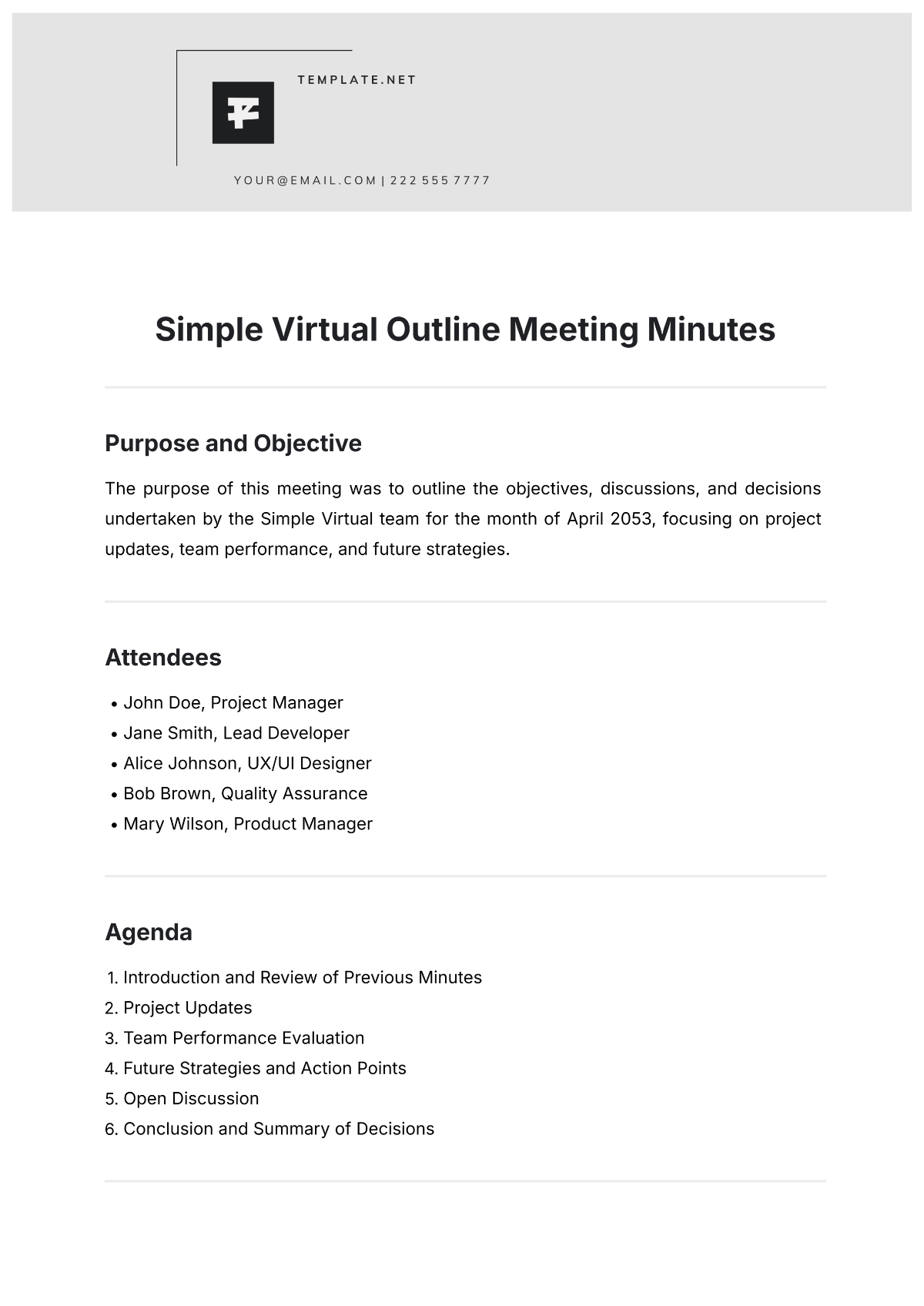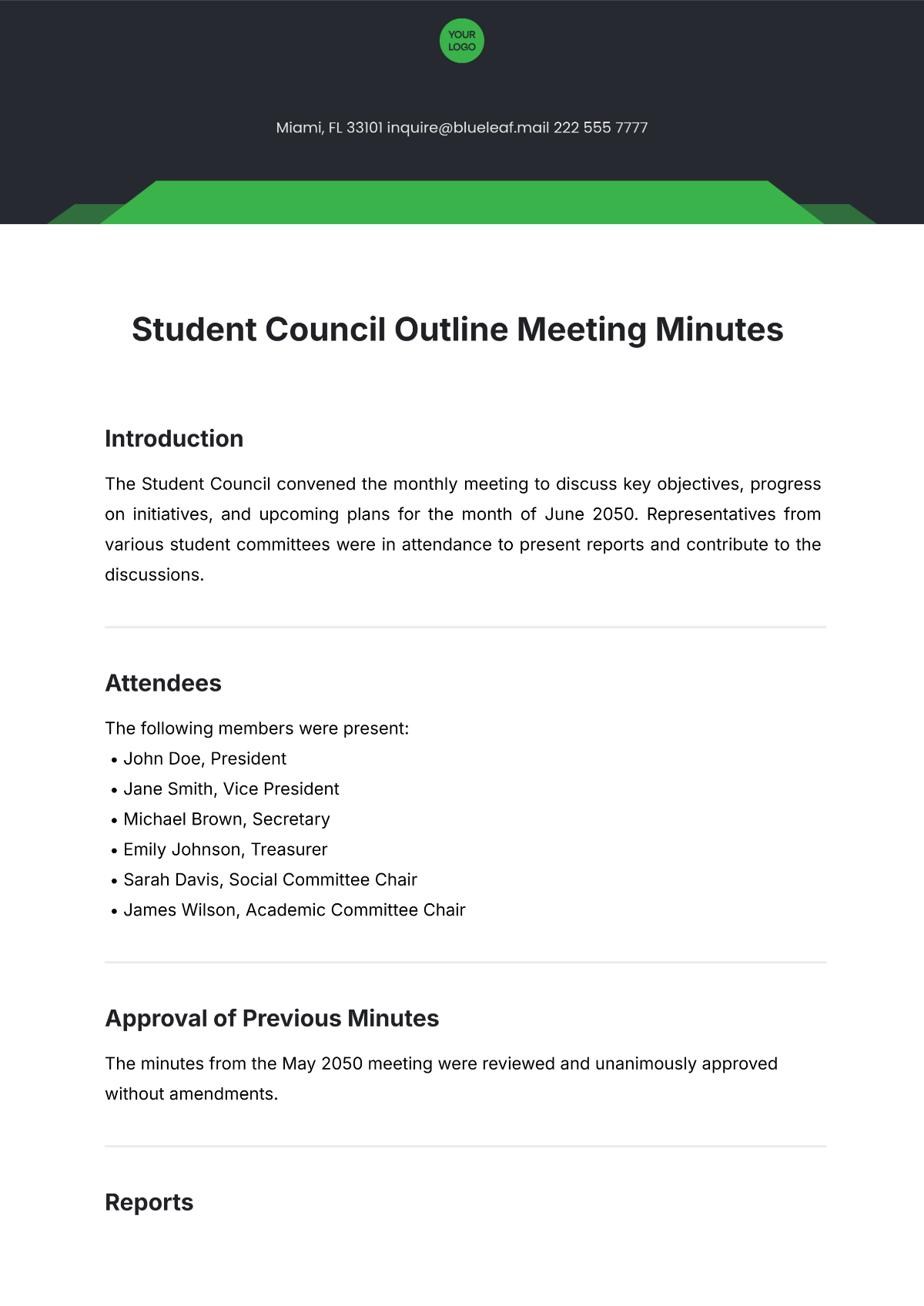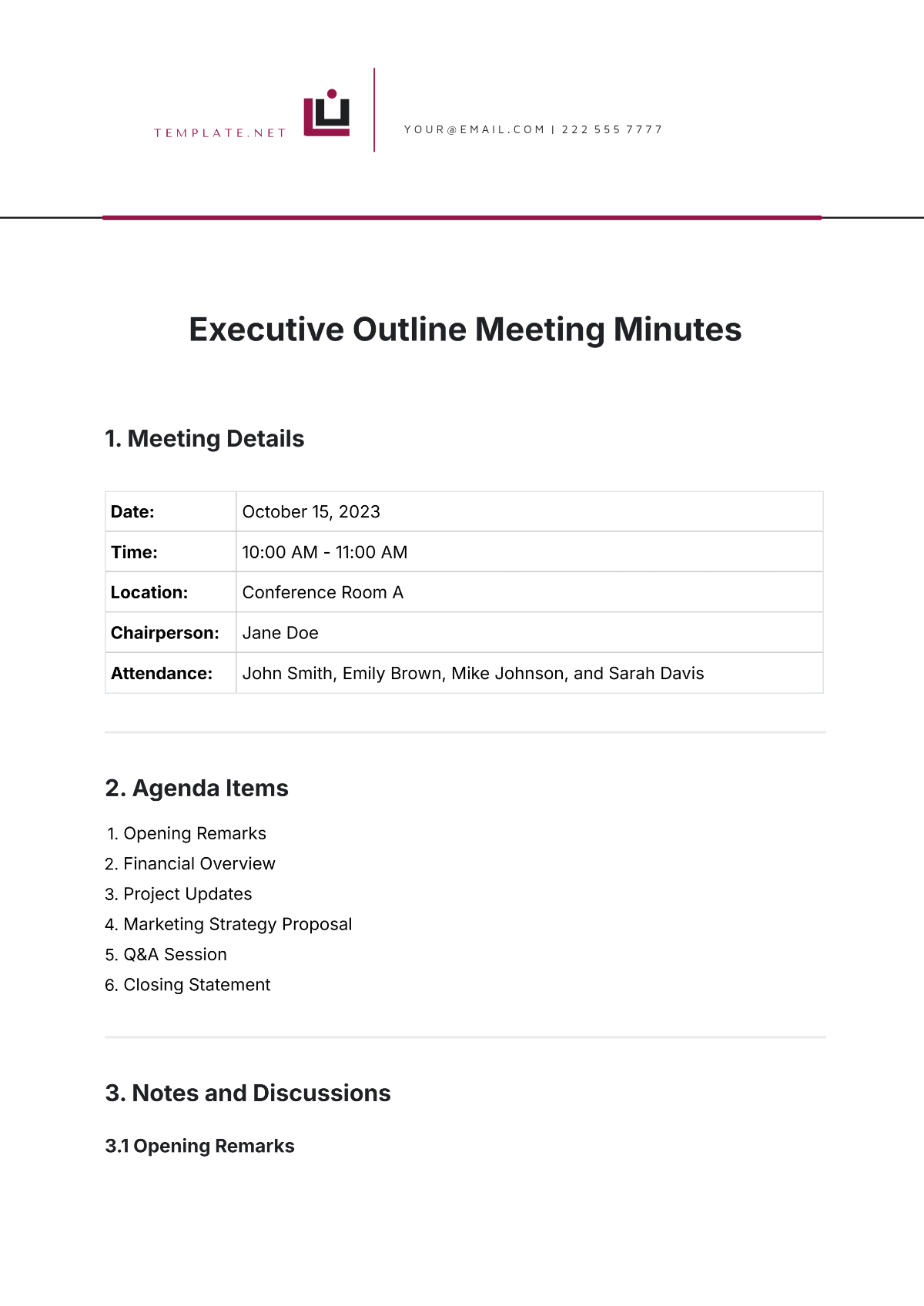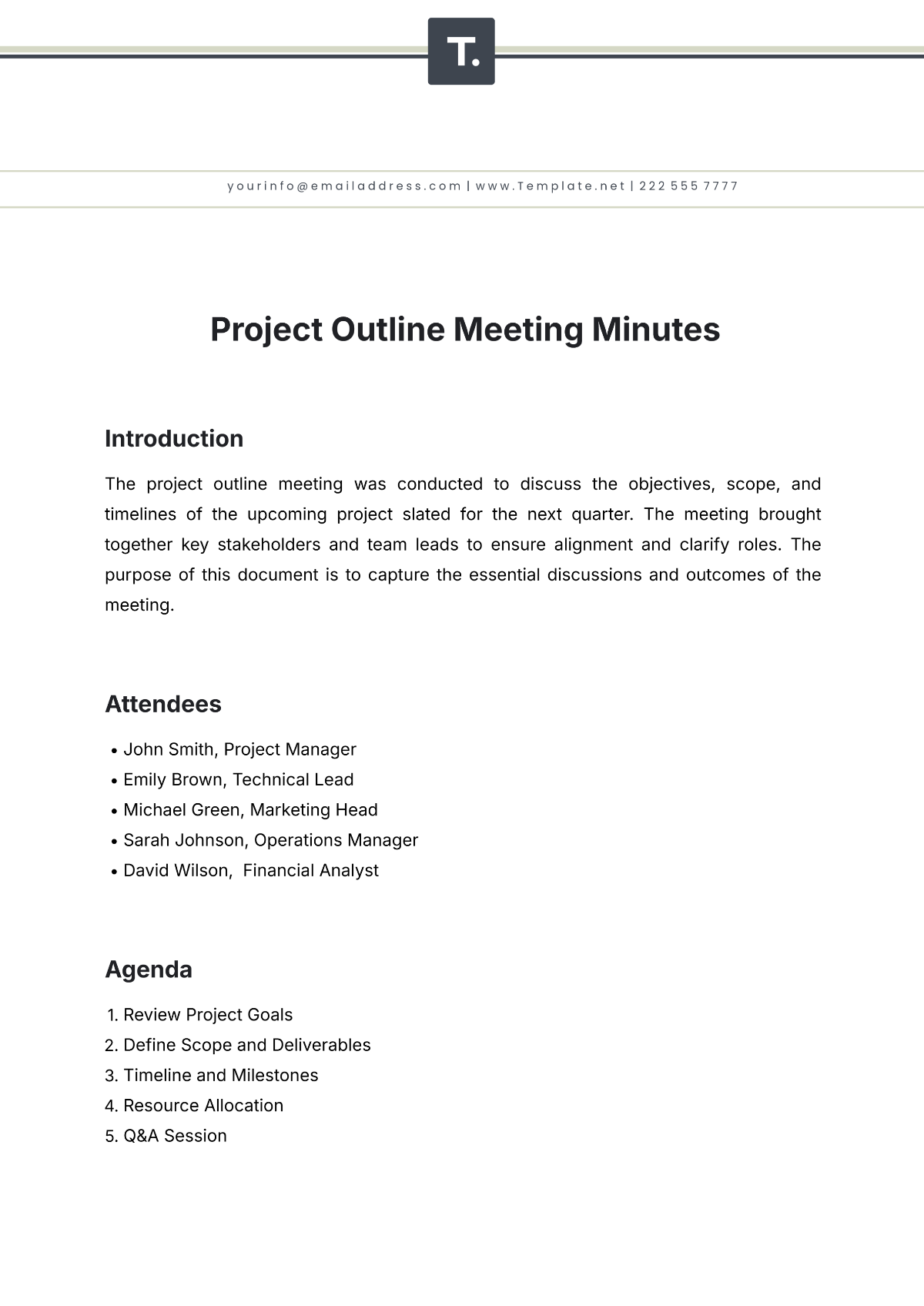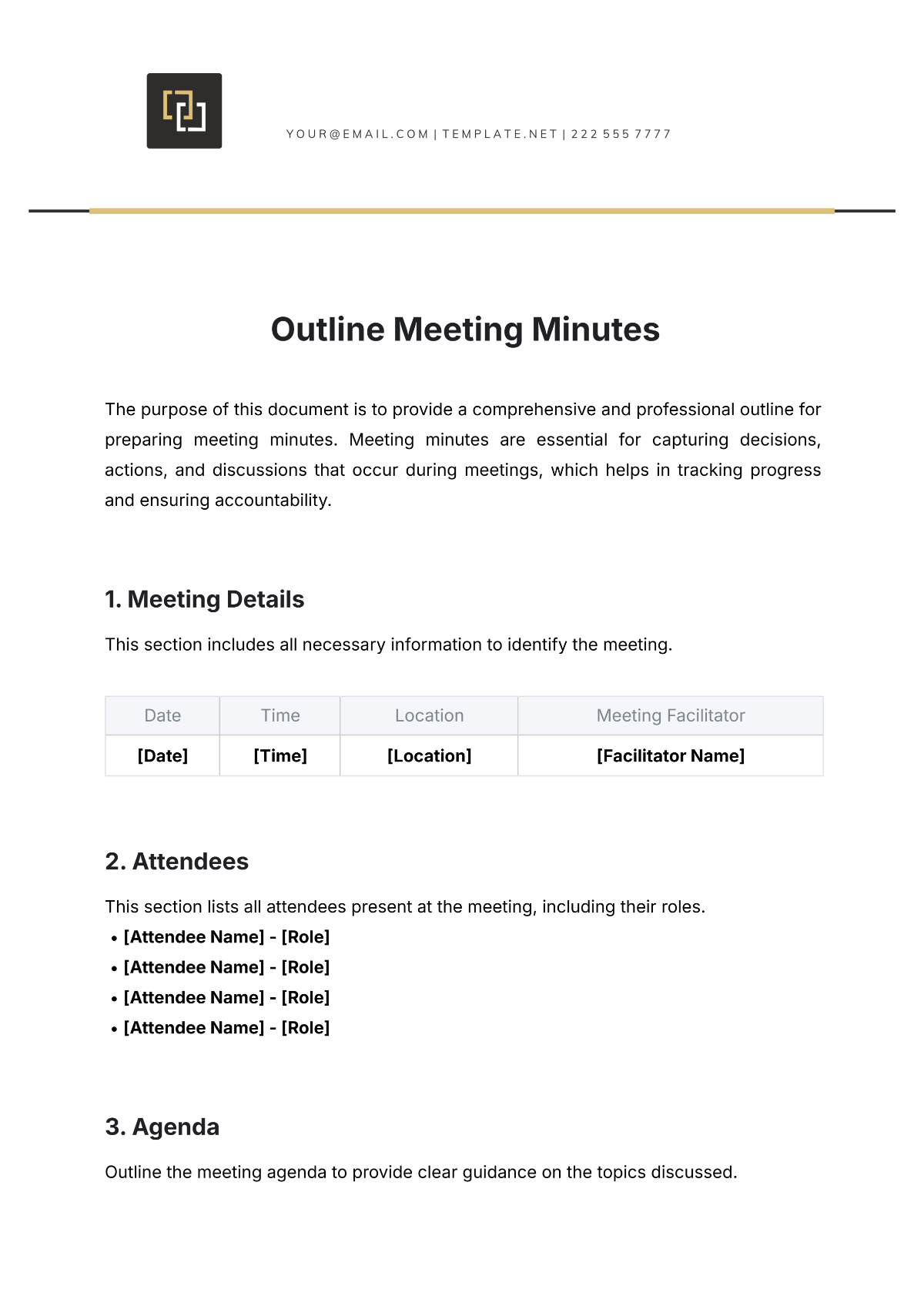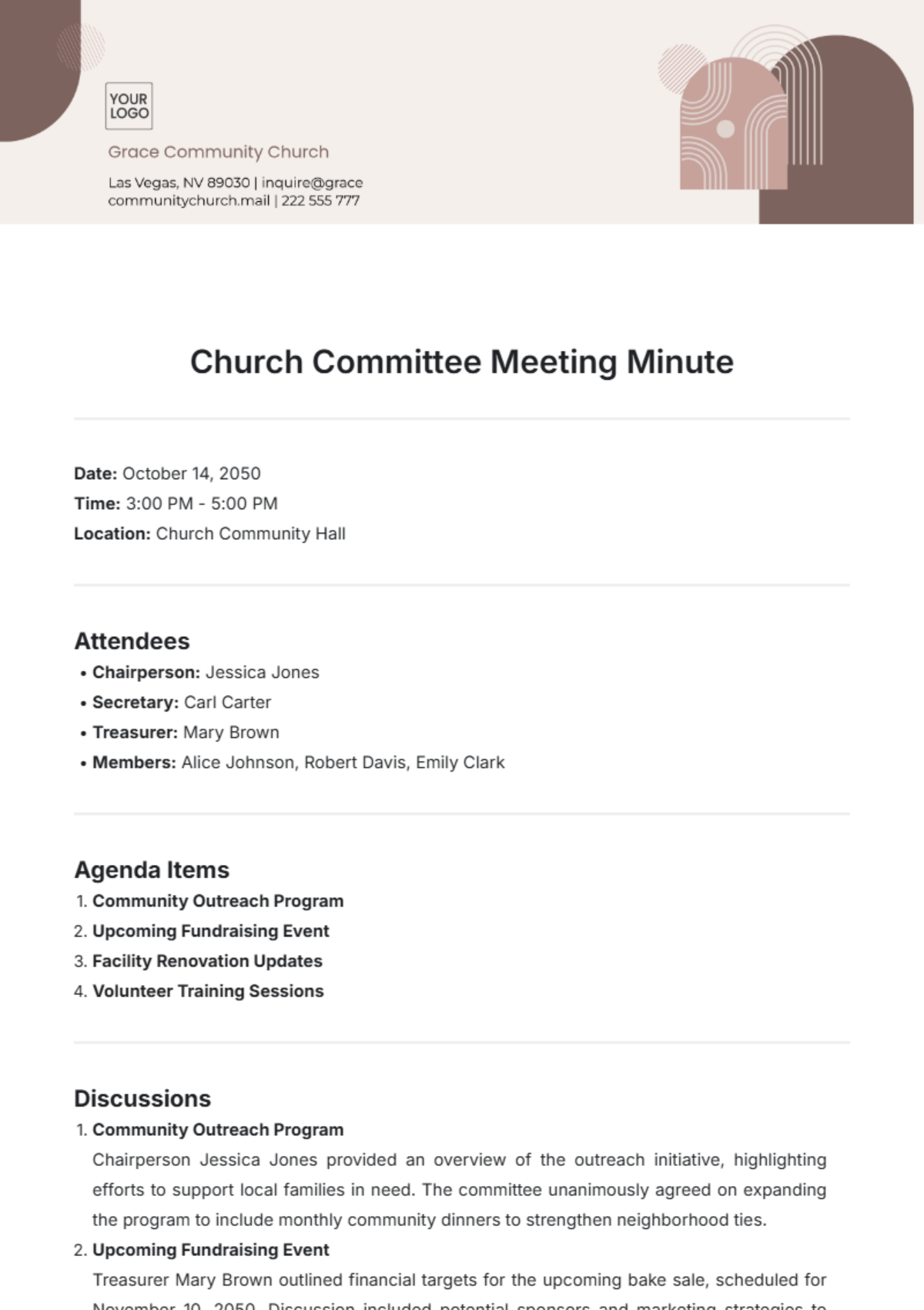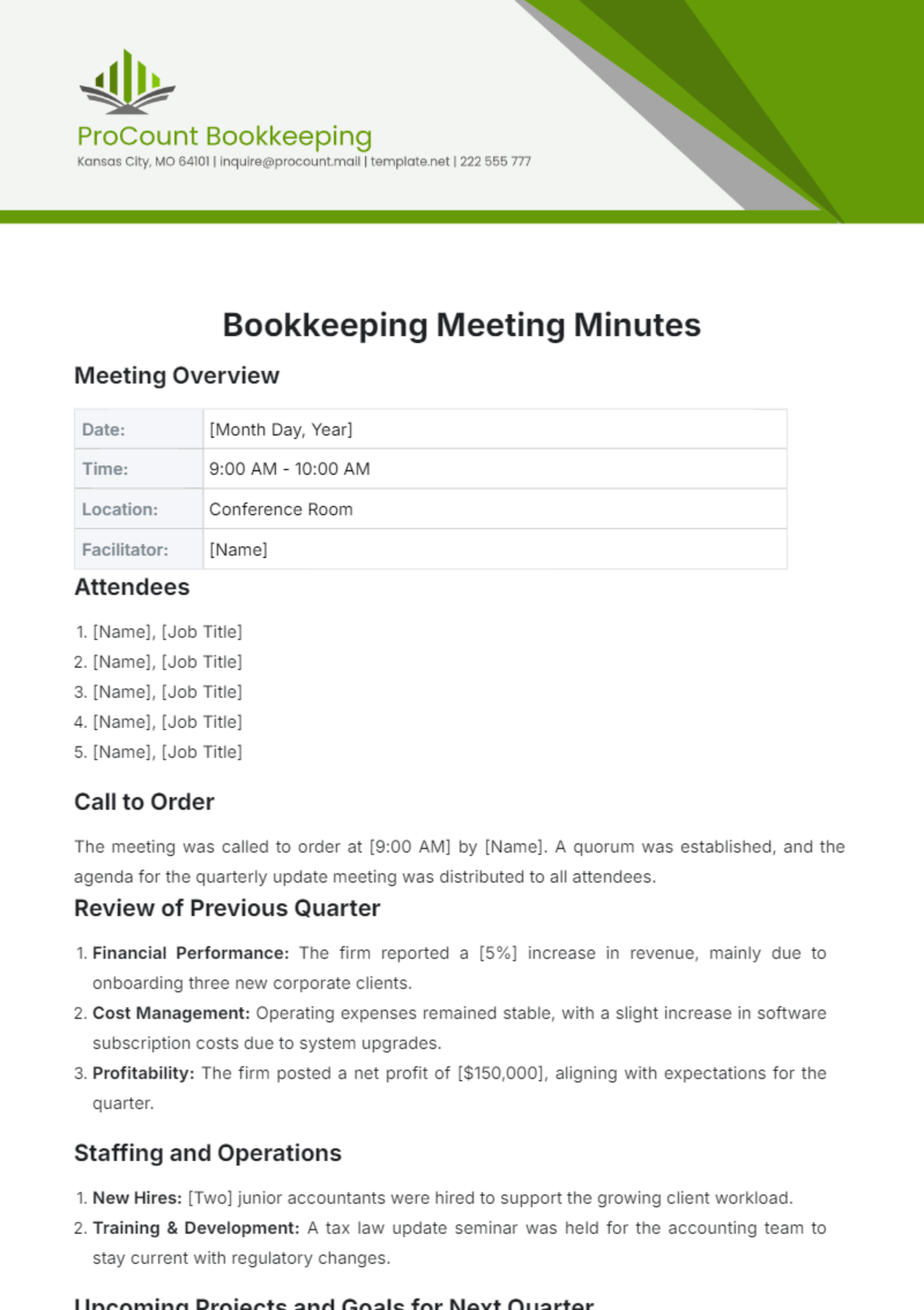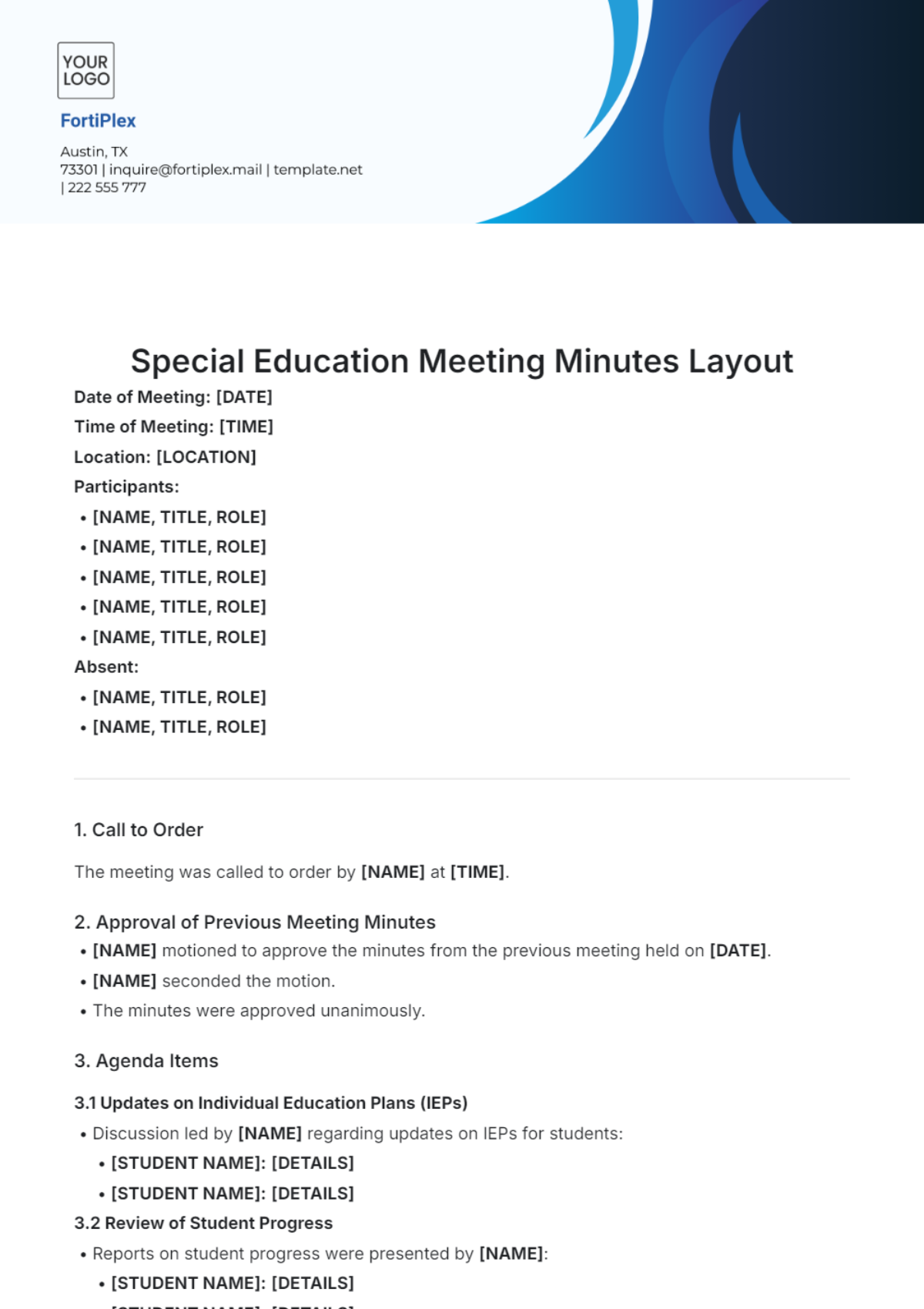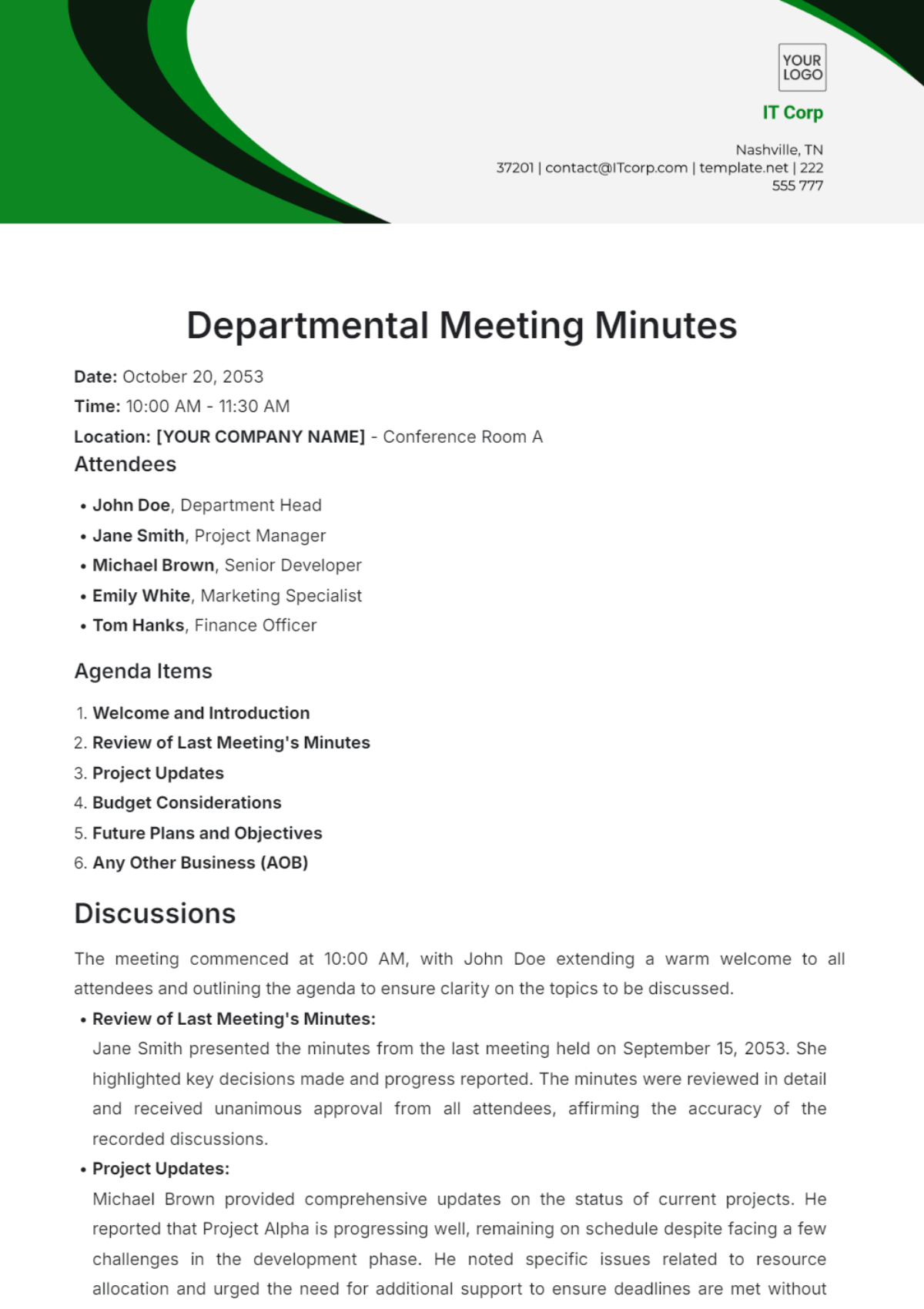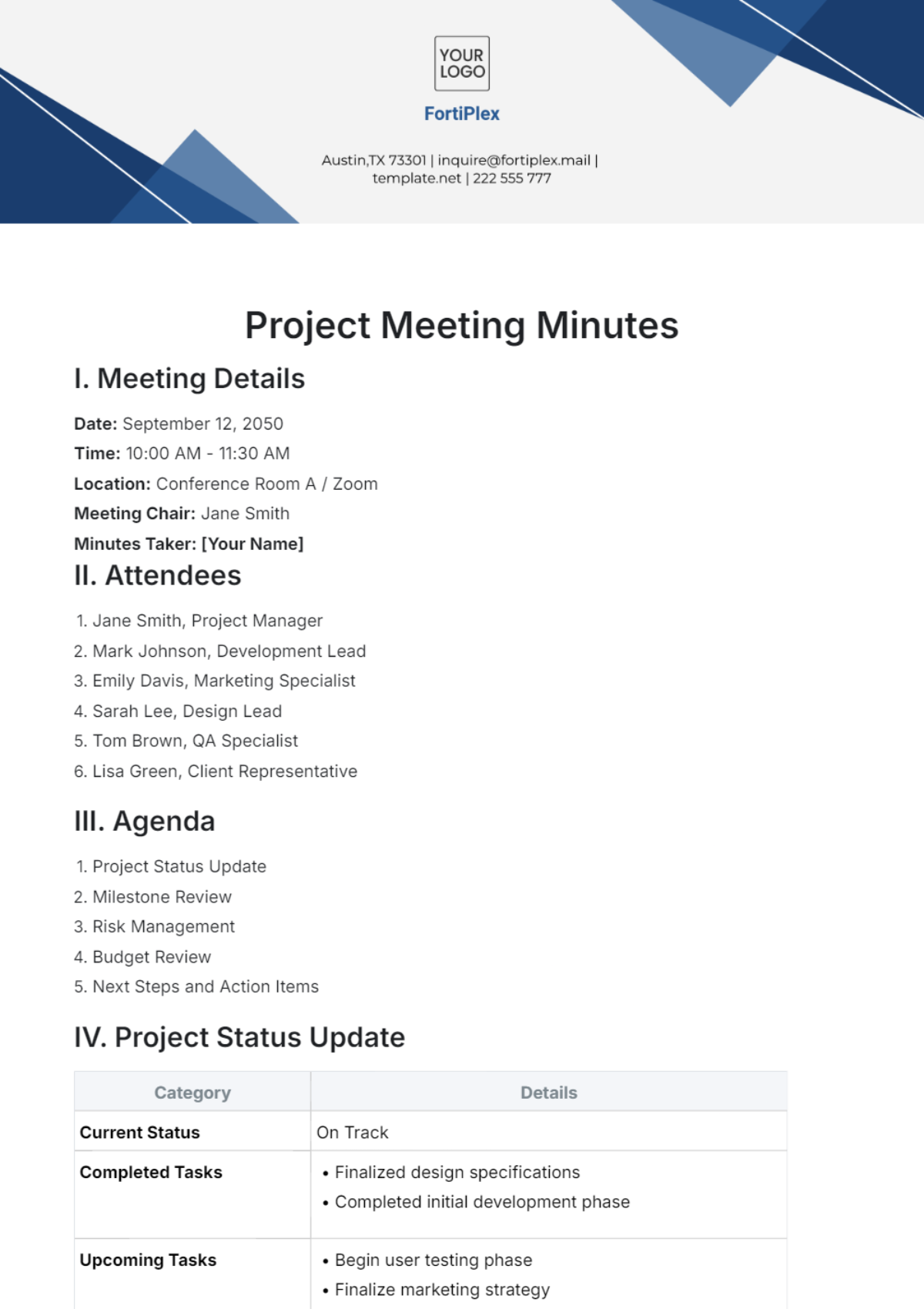Meeting Minutes Chapter Outline
Prepared by: [Your Name]
Date: [Date]
1. Introduction to Meeting Minutes
1.1 Definition and Purpose
Meeting minutes are a formal record of the discussions, decisions, and actions taken during a meeting. They serve as a reference for attendees and non-attendees, ensuring that all participants have a clear understanding of what was discussed and decided. Accurate meeting minutes help maintain accountability and provide a historical record of meetings.
1.2 Types of Meeting Minutes
Formal Minutes: Detailed records typically used in board meetings and official gatherings.
Informal Minutes: Summarized notes often used in casual meetings or internal team discussions.
Regular Meetings: Routine meetings with recurring agendas, such as weekly team meetings.
Special Meetings: One-time or special-purpose meetings with unique agendas.
2. Preparing for Meeting Minutes
2.1 Understanding Meeting Objectives
Before the meeting, review the agenda and objectives to ensure you capture relevant information. Identify key participants and understand their roles to accurately record contributions and decisions.
2.2 Tools and Materials
Note-taking Tools: Choose between traditional paper and digital options based on preference and meeting context.
Recording Devices: Use audio or video recordings if allowed and necessary for accurate transcription.
Templates and Software: Utilize templates for consistency and software tools like Microsoft Word or specialized minute-taking applications.
3. Recording Meeting Minutes
3.1 Structure of Meeting Minutes
Header:
Date: August 15, 2050
Time: 10:00 AM - 12:00 PM
Location: Conference Room A
Attendees: John Smith, Sarah Johnson, Mark Lee
Agenda Items and Discussions: Capture the main topics discussed and the key points of each discussion.
Action Items and Decisions: Record specific tasks assigned and decisions made, including responsible parties and deadlines.
3.2 Taking Notes During the Meeting
Key Points to Capture: Summarize main ideas and decisions without writing every detail.
Abbreviations and Symbols: Use shorthand like "AP" for Action Point and "Dec" for Decision to streamline note-taking.
Maintaining Clarity and Brevity: Focus on essential information to ensure clarity and avoid excessive detail.
4. Writing Meeting Minutes
4.1 Organizing Content
Chronological Order: Arrange minutes according to the sequence of the meeting agenda.
Grouping Similar Items: Combine related discussions and decisions for better readability.
Clear Headings and Bullet Points: Use headings to separate sections and bullet points for concise information.
4.2 Writing Style and Language
Formal vs. Informal Tone: Match the tone to the meeting type; formal for board meetings, informal for team huddles.
Avoiding Jargon and Complex Language: Use straightforward language to ensure everyone understands.
Ensuring Accuracy and Objectivity: Represent discussions and decisions without personal bias.
5. Reviewing and Finalizing Meeting Minutes
5.1 Editing and Proofreading
Checking for Accuracy: Verify the details of discussions and decisions with the meeting agenda and participants.
Correcting Grammar and Spelling: Proofread for grammatical and spelling errors to maintain professionalism.
Ensuring Consistency: Confirm that the minutes align with the agenda and previous minutes.
5.2 Approval and Distribution
Seeking Approval: Share the draft minutes with the meeting chair or key participants for approval.
Distributing Minutes: Send the final minutes to all attendees and relevant parties, ensuring they are accessible for future reference.
Storing Minutes: Archive minutes in a centralized location for easy retrieval.
6. Common Challenges and Solutions
6.1 Dealing with Ambiguities
Clarifying Unclear Points: Contact participants for clarification on ambiguous points.
Using Follow-up Communications: Send follow-up emails or messages to confirm details and resolve ambiguities.
6.2 Handling Discrepancies and Errors
Identifying Mistakes: Review minutes for discrepancies between recorded information and actual discussions.
Communicating Updates: Notify stakeholders of any corrections or updates to the minutes.
7. Best Practices for Effective Meeting Minutes
7.1 Maintaining Objectivity and Neutrality
Avoiding Personal Opinions: Focus on facts and decisions without including personal views.
Ensuring Accurate Representation: Reflect the discussions and outcomes faithfully.
7.2 Timeliness and Efficiency
Completing Minutes Promptly: Aim to finalize and distribute minutes within 24 hours of the meeting.
Using Templates and Tools: Leverage pre-designed templates and tools to streamline the process.
8. Conclusion
8.1 Recap of Key Points
Meeting minutes are essential for documenting meetings effectively. Proper preparation, clear recording, and accurate finalization are crucial for maintaining useful records.
8.2 Importance of Continuous Improvement
Encourage feedback on the minutes process and strive for continuous improvement. Stay updated with best practices to enhance the quality and efficiency of meeting documentation.
